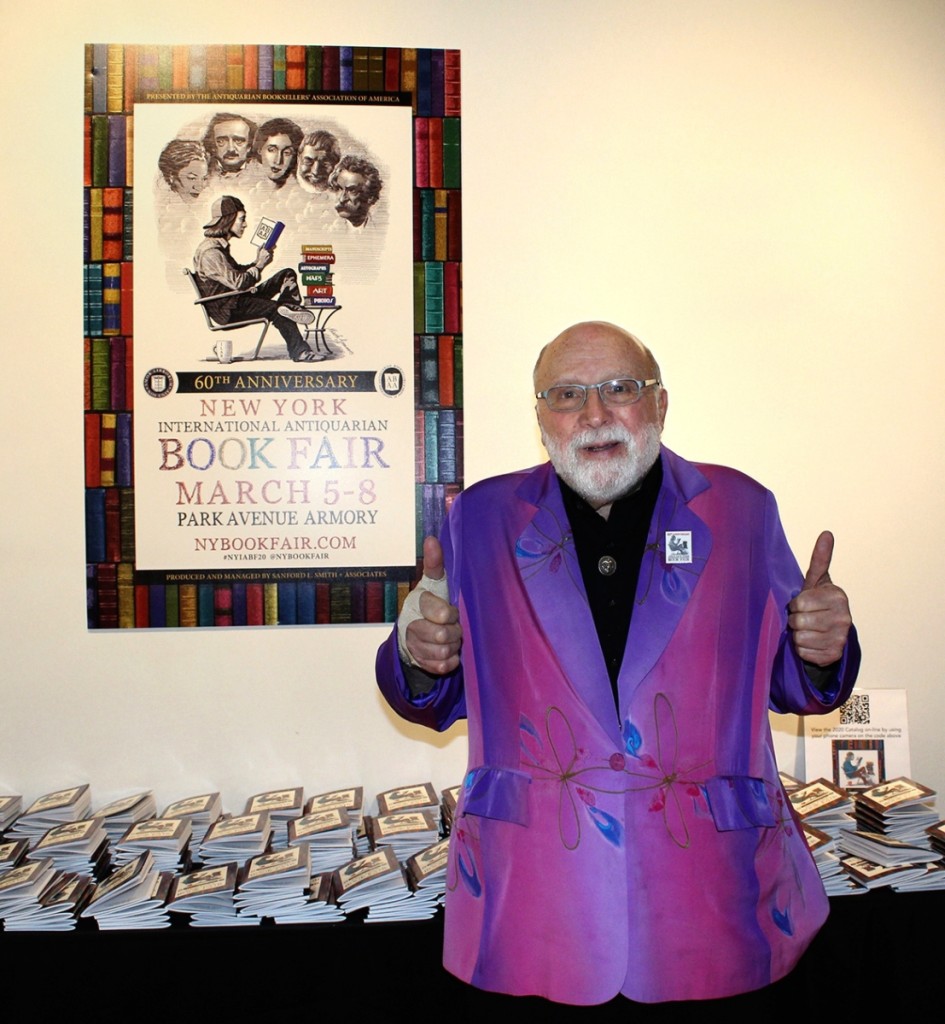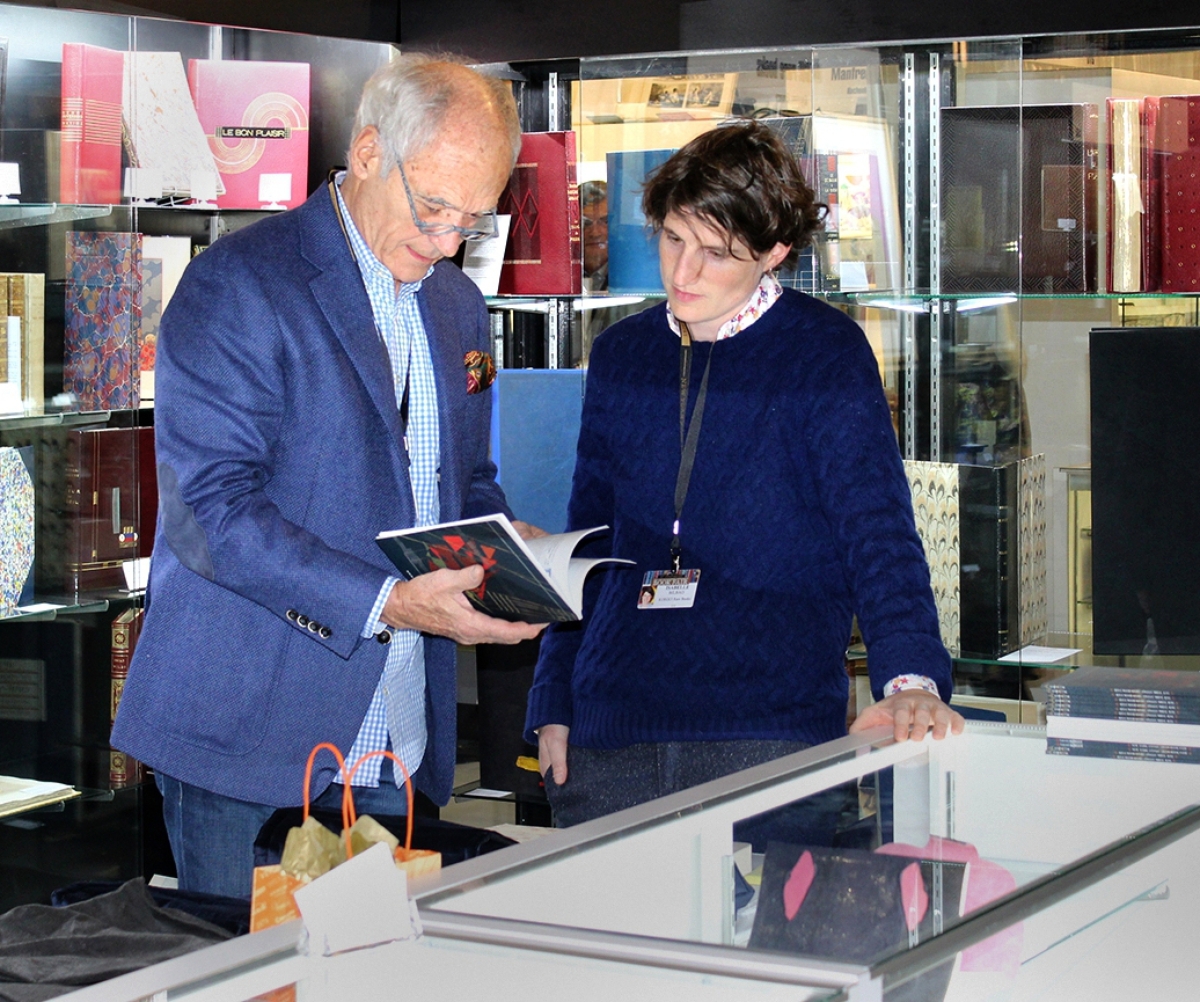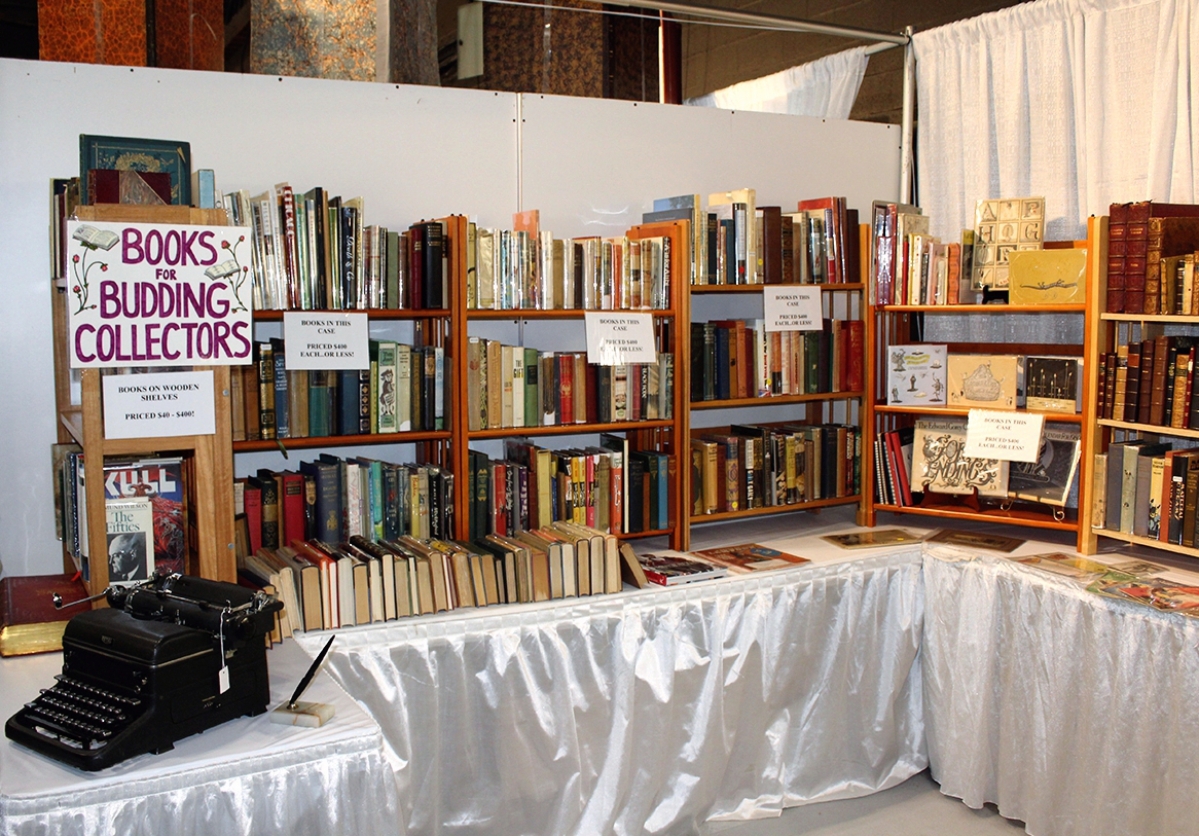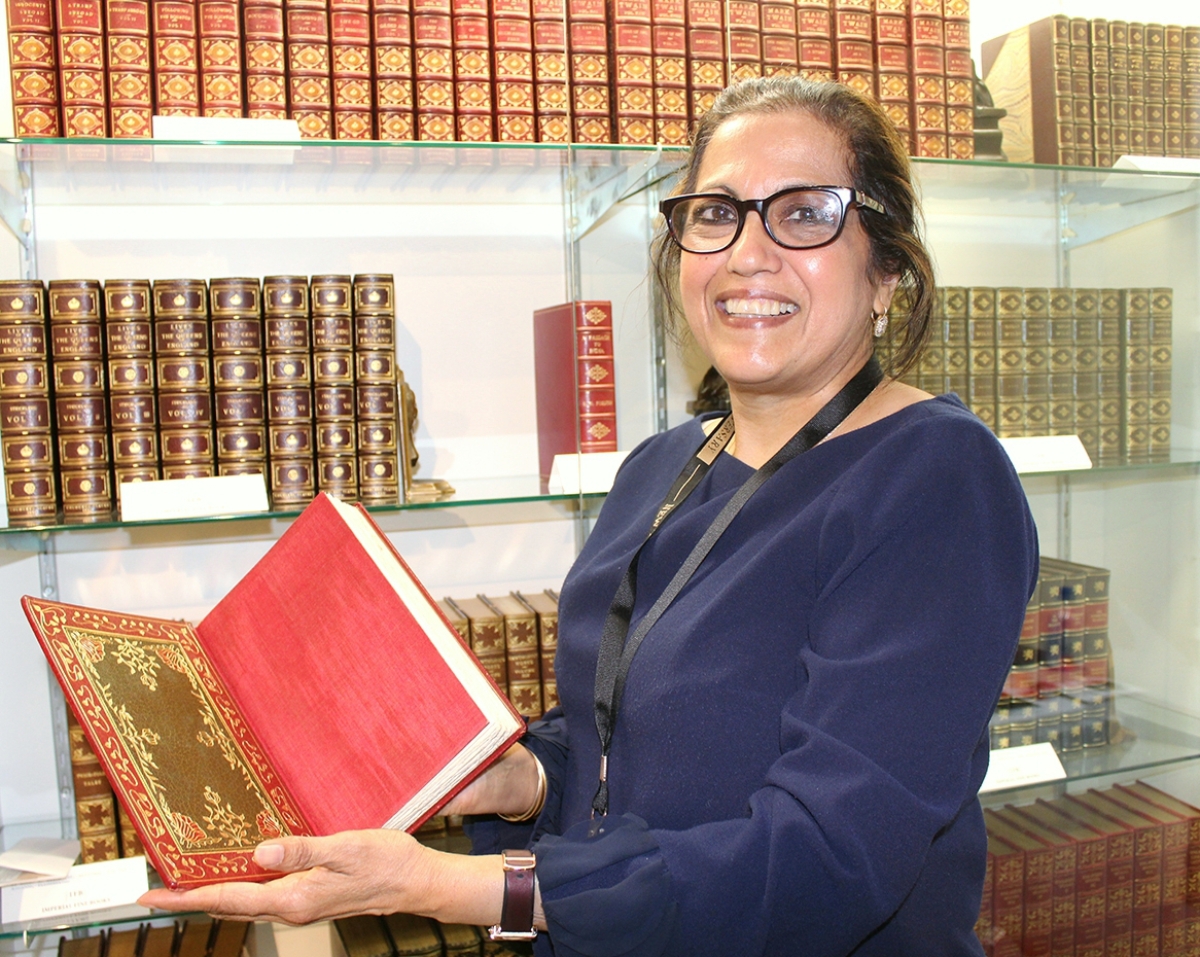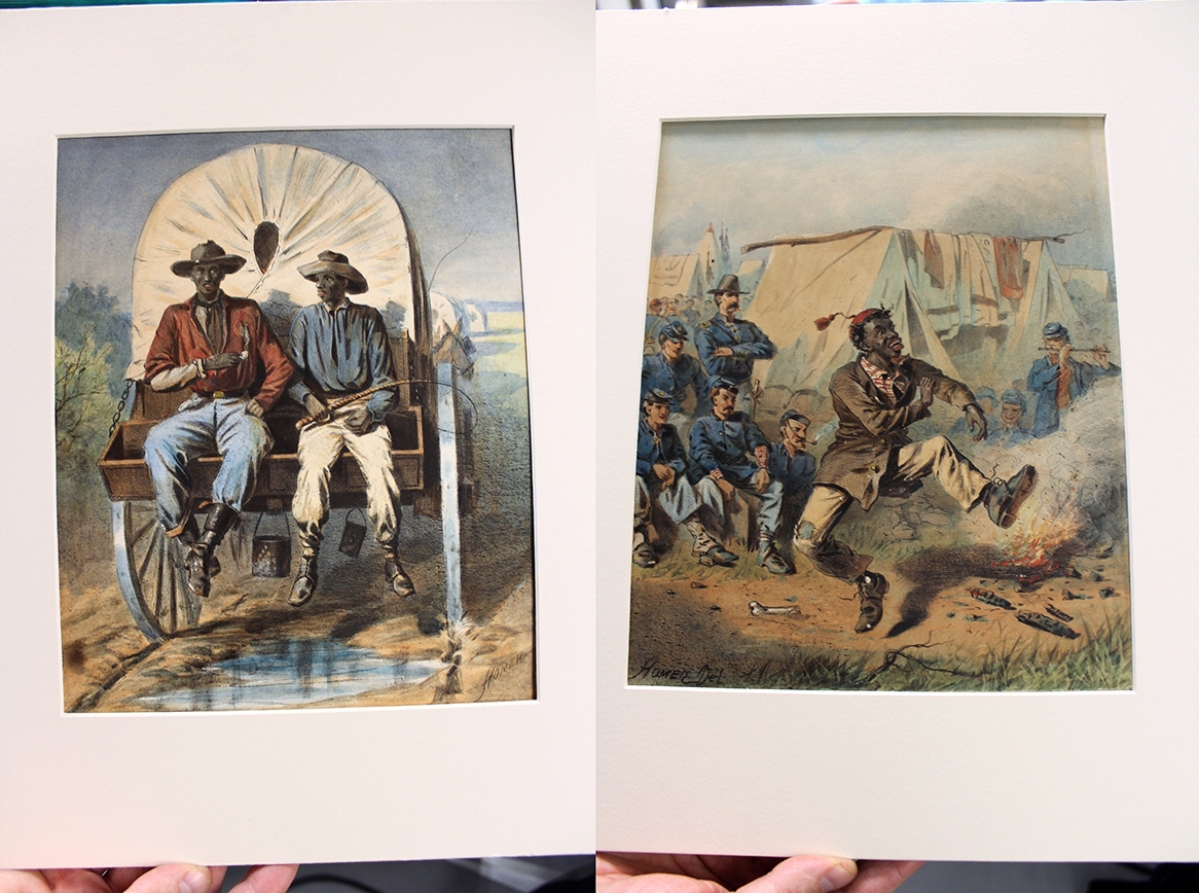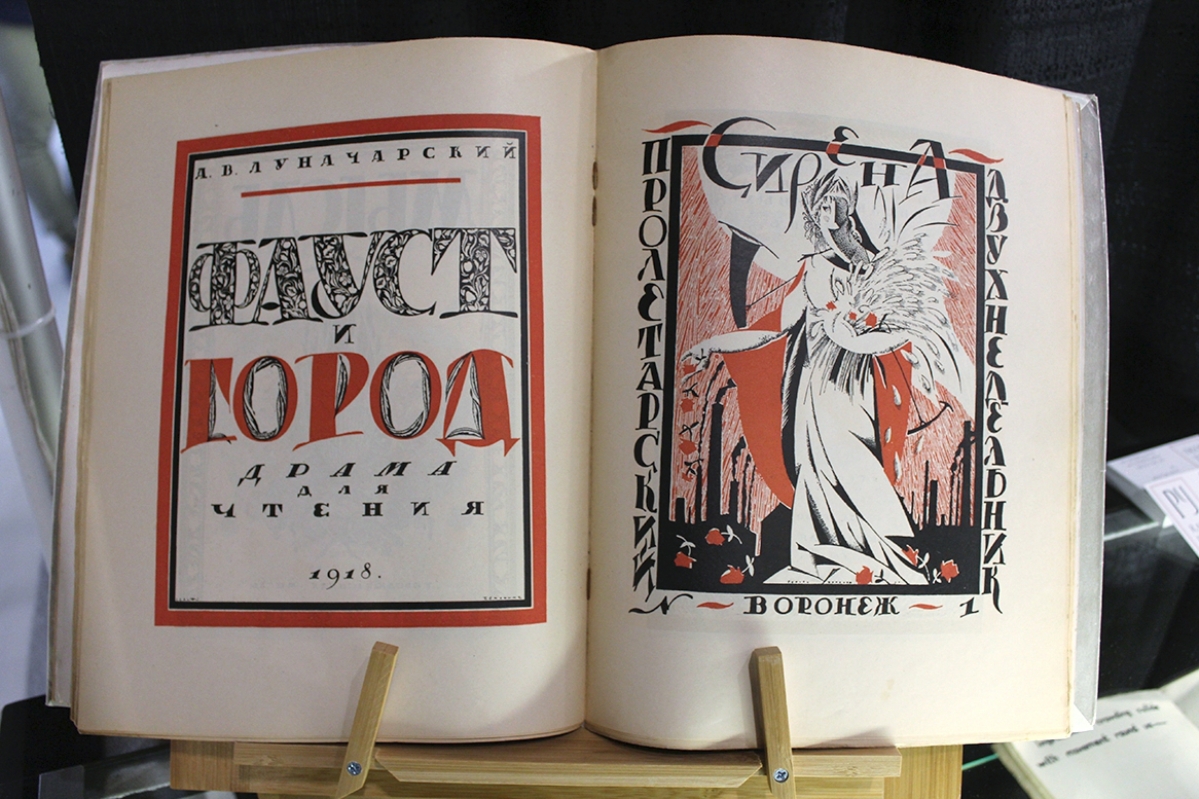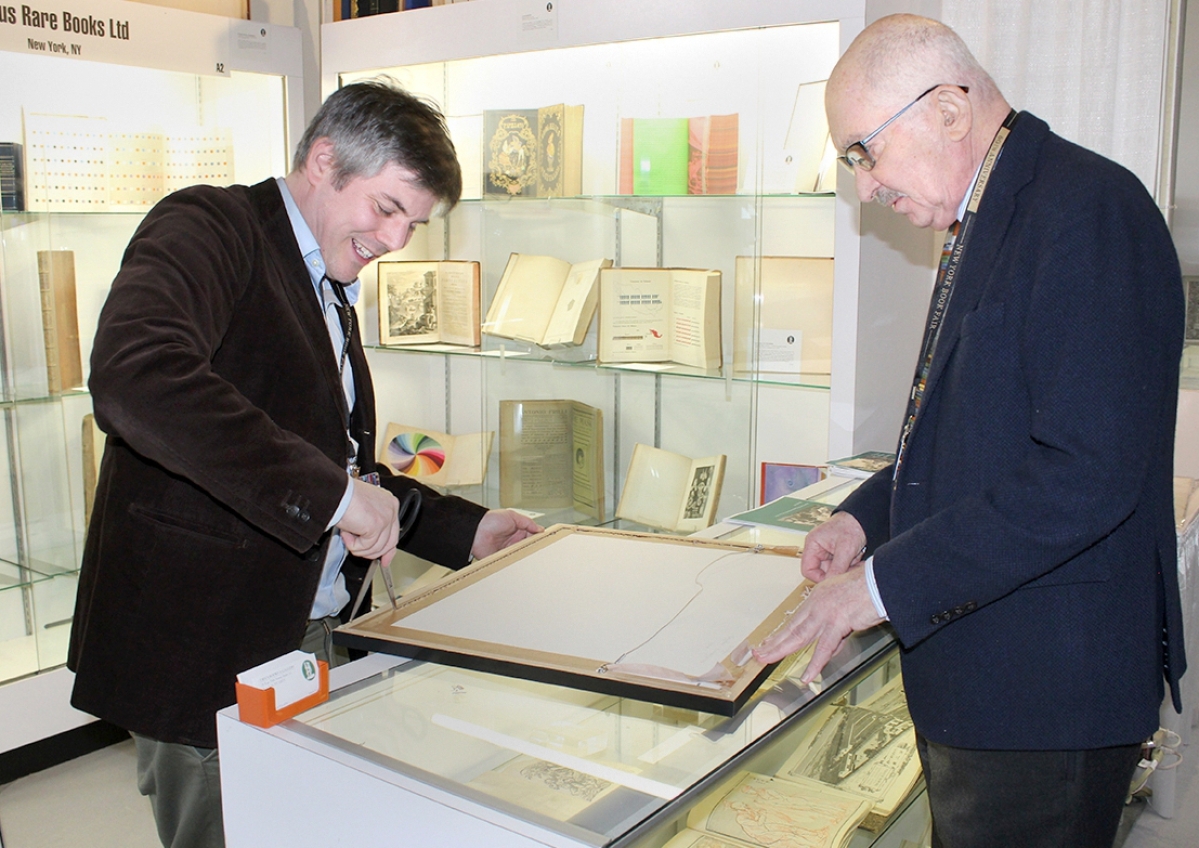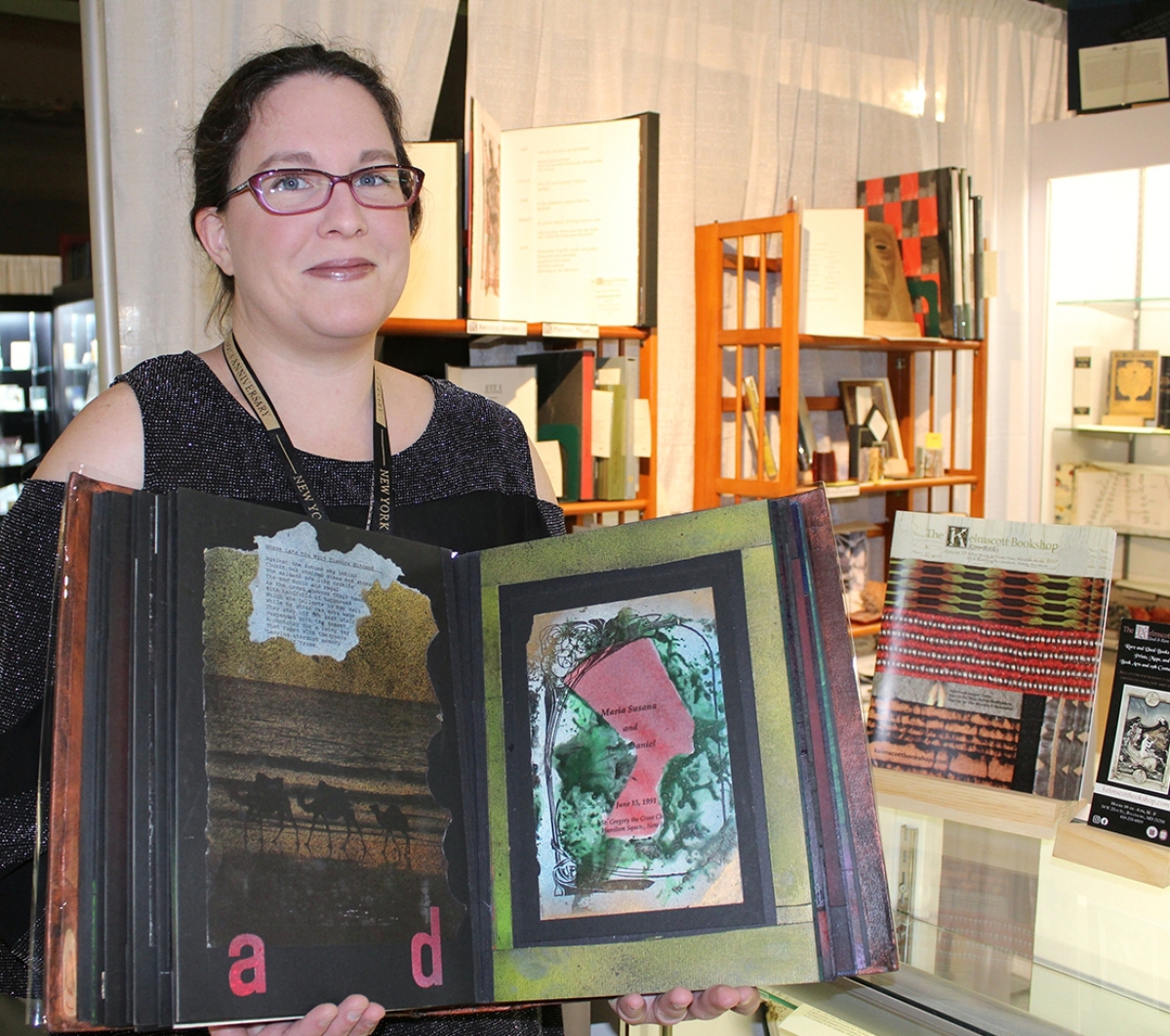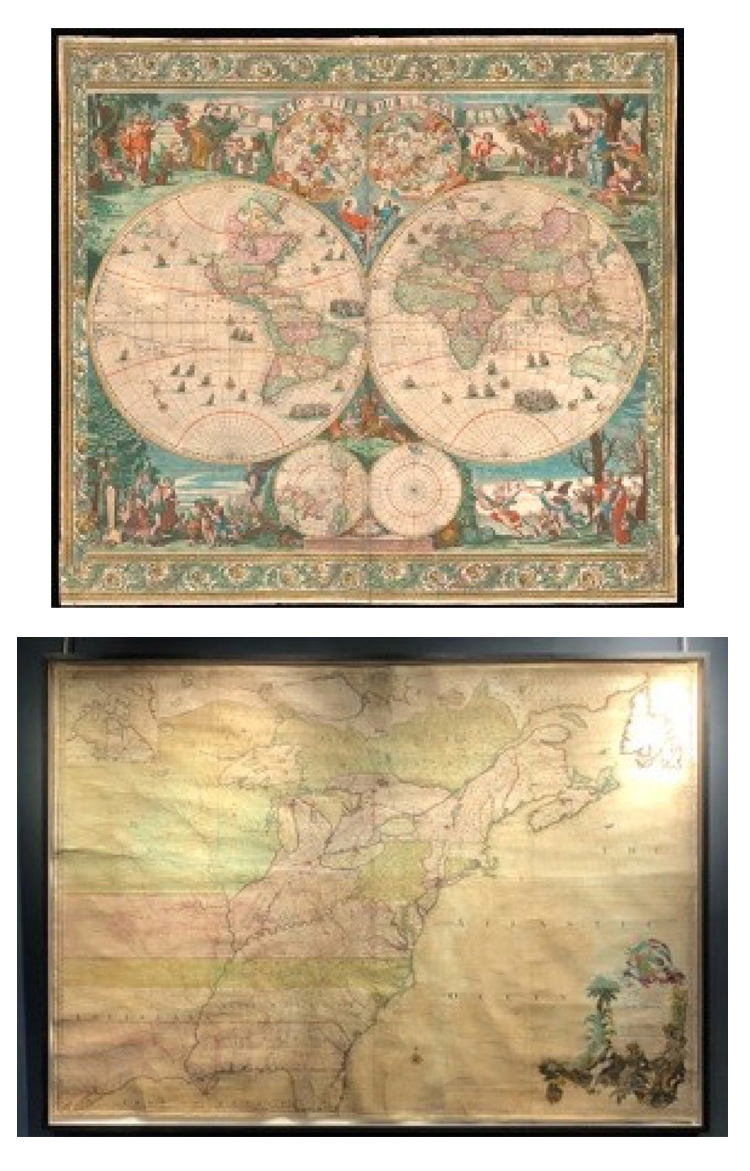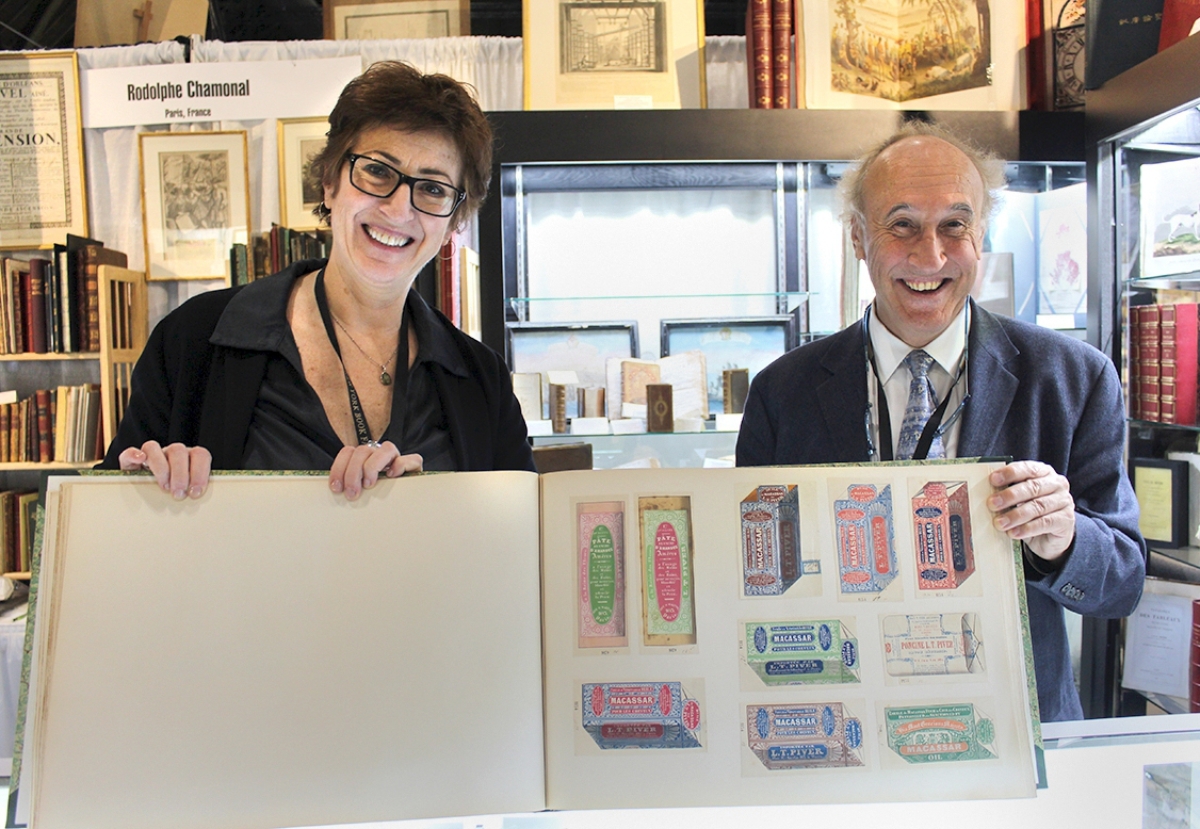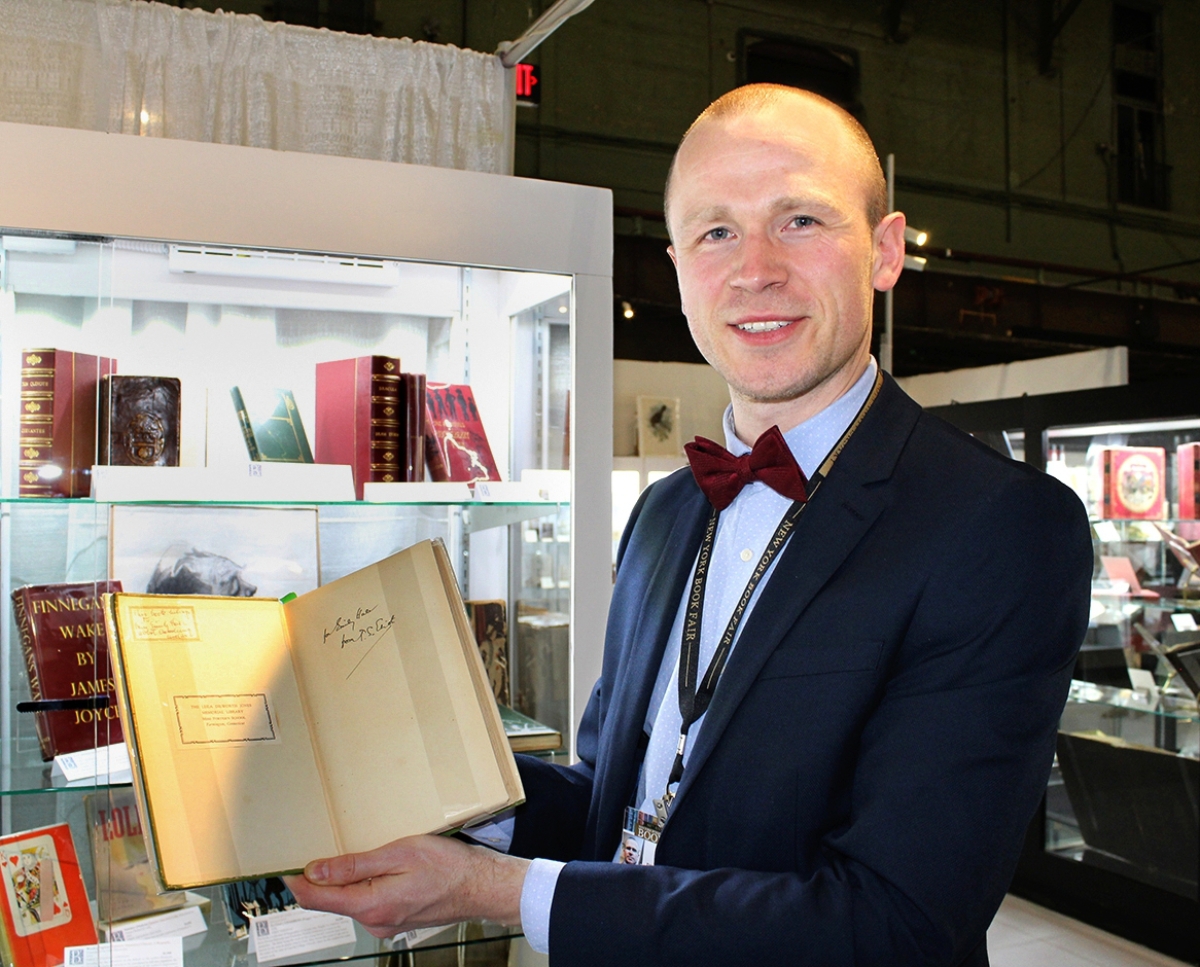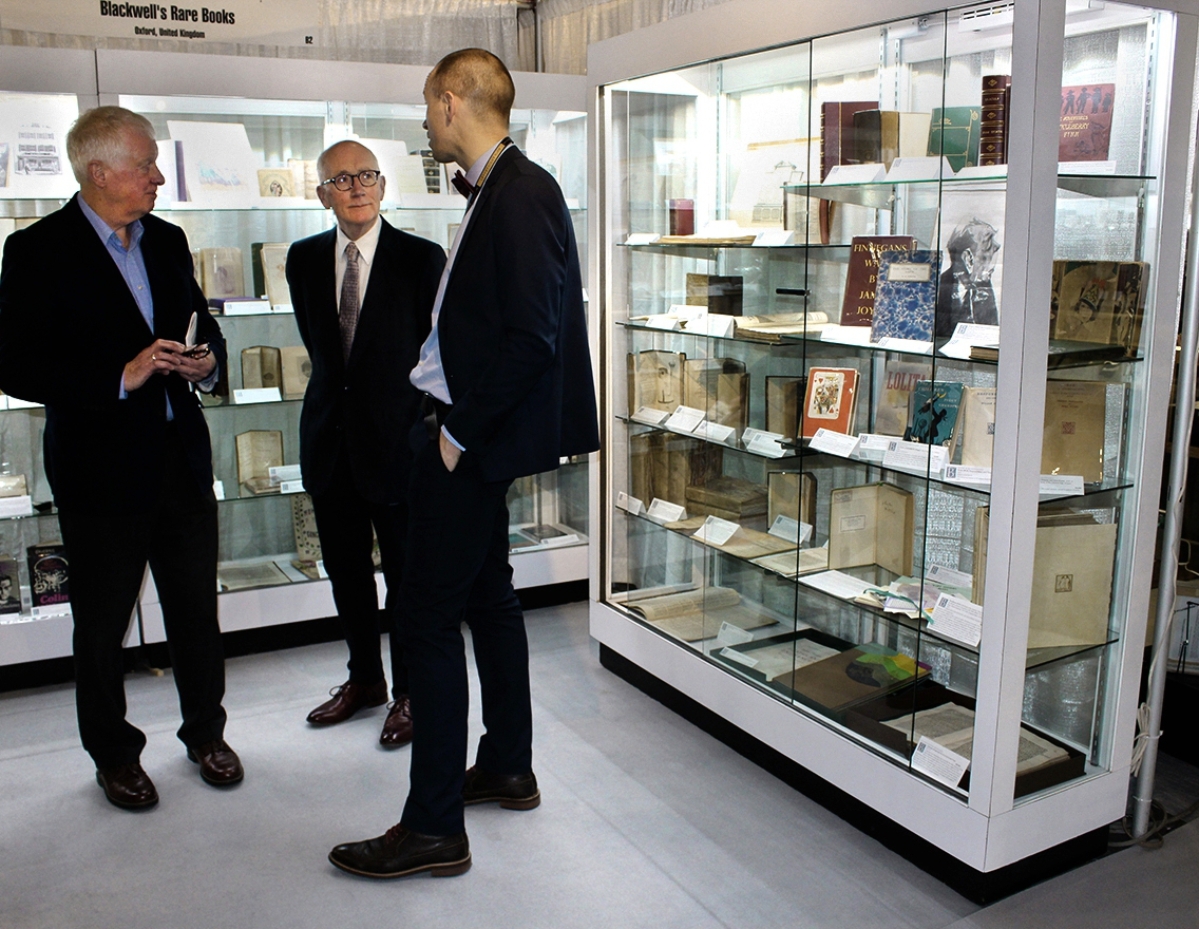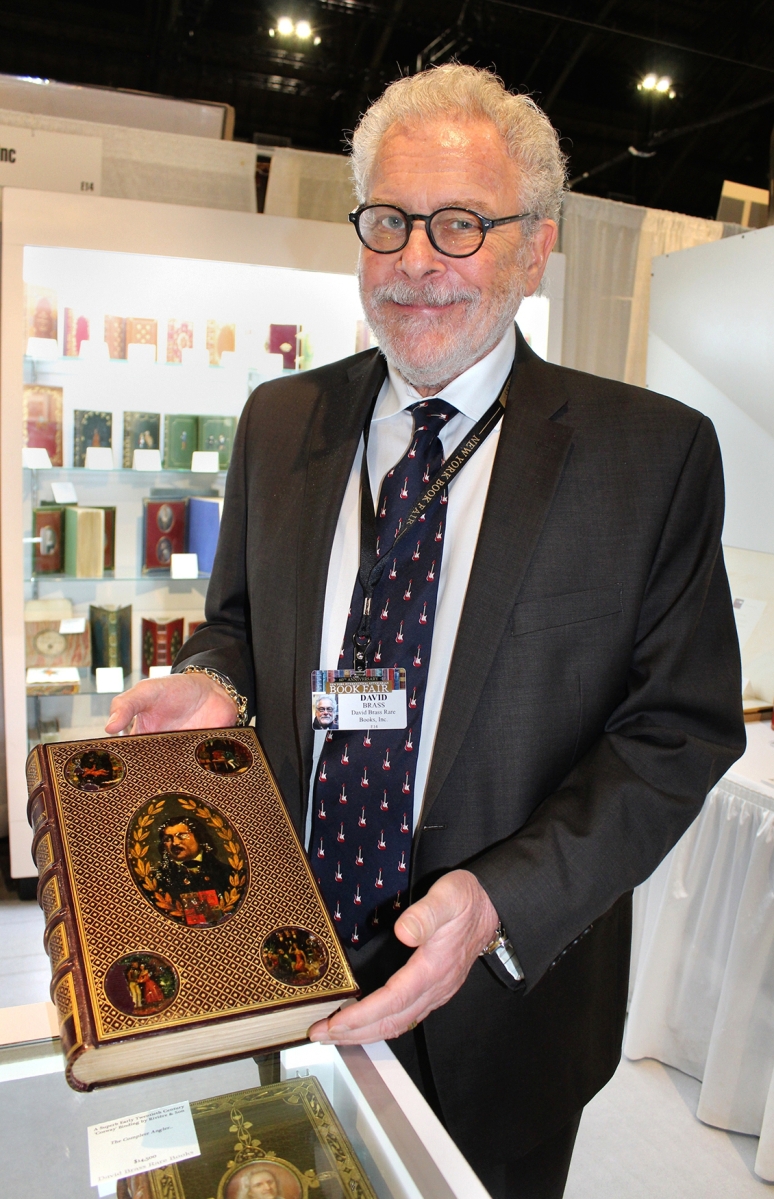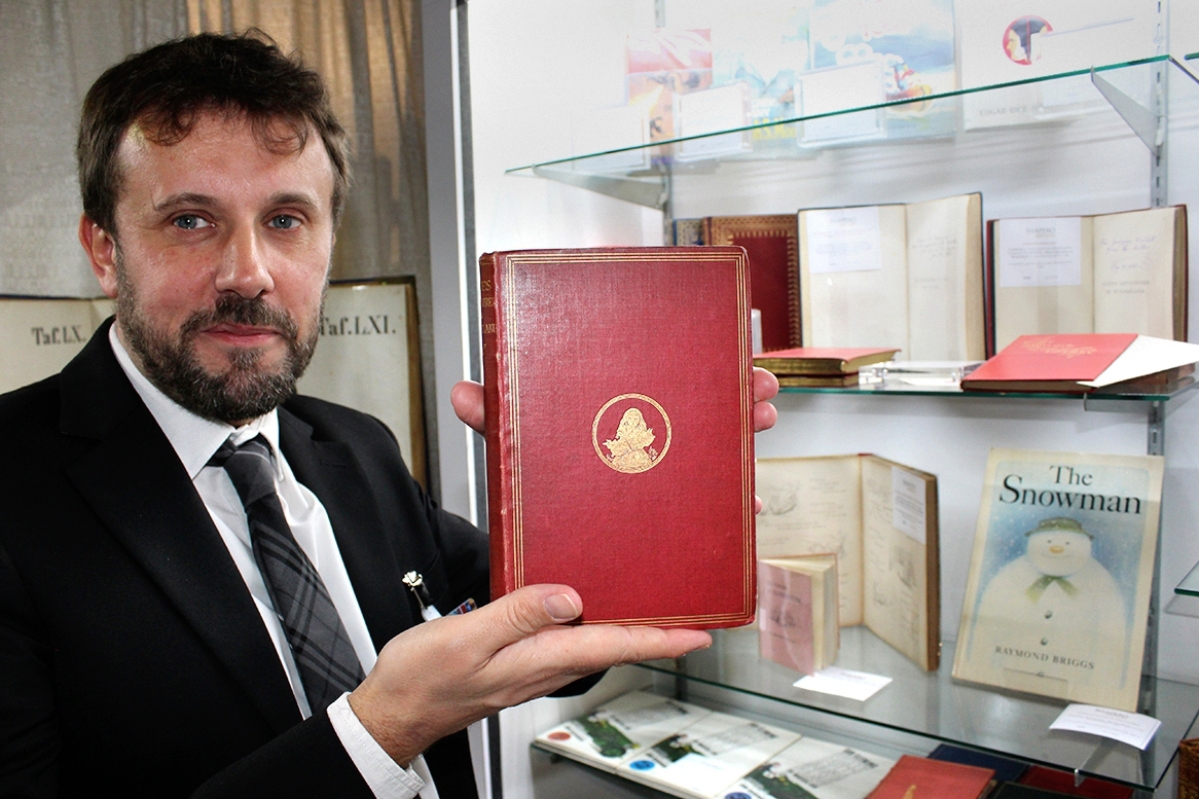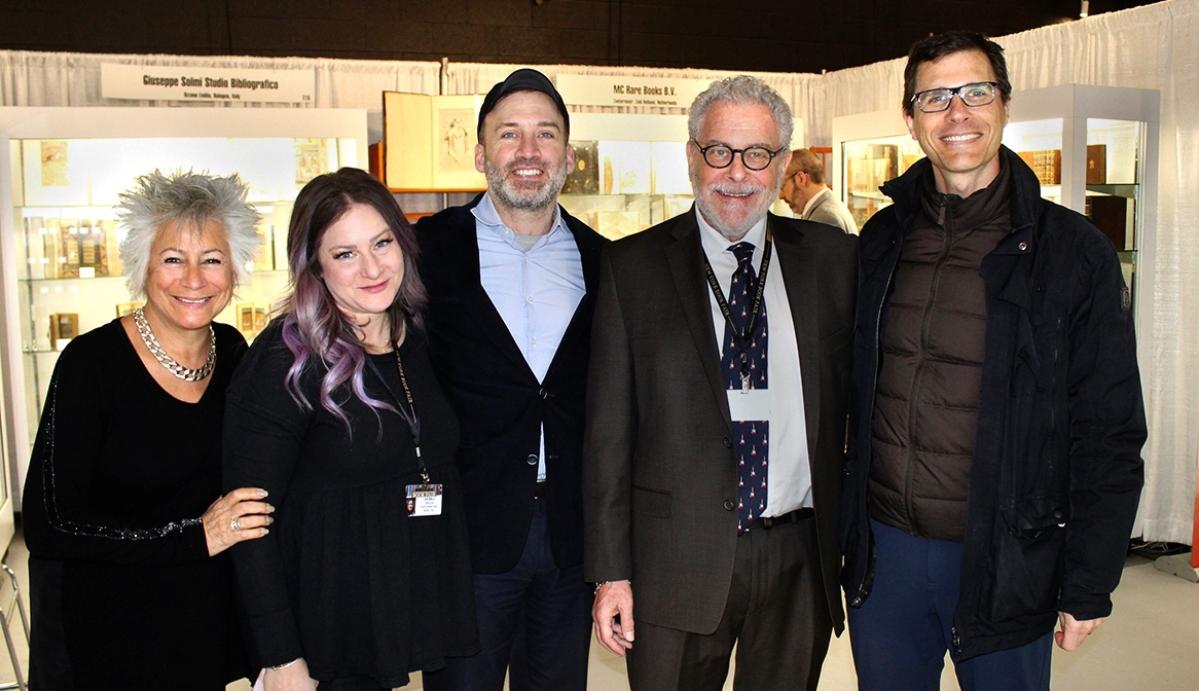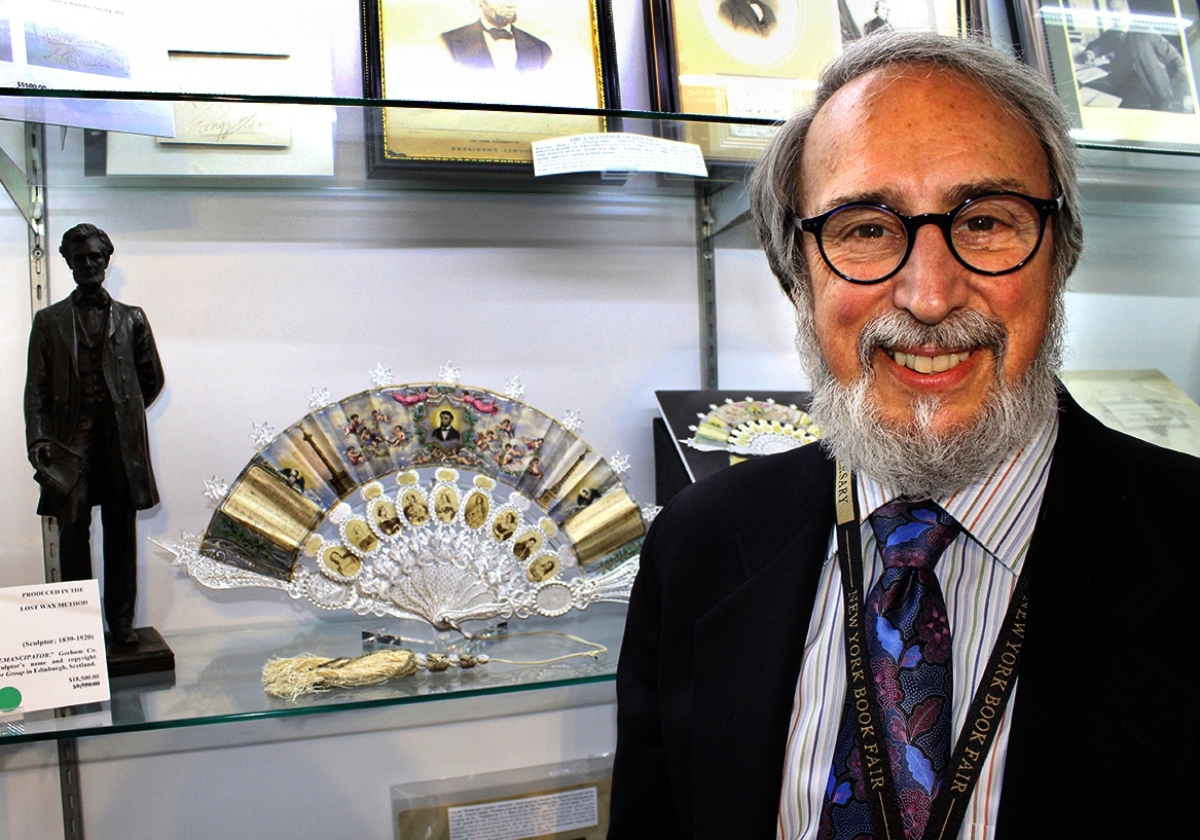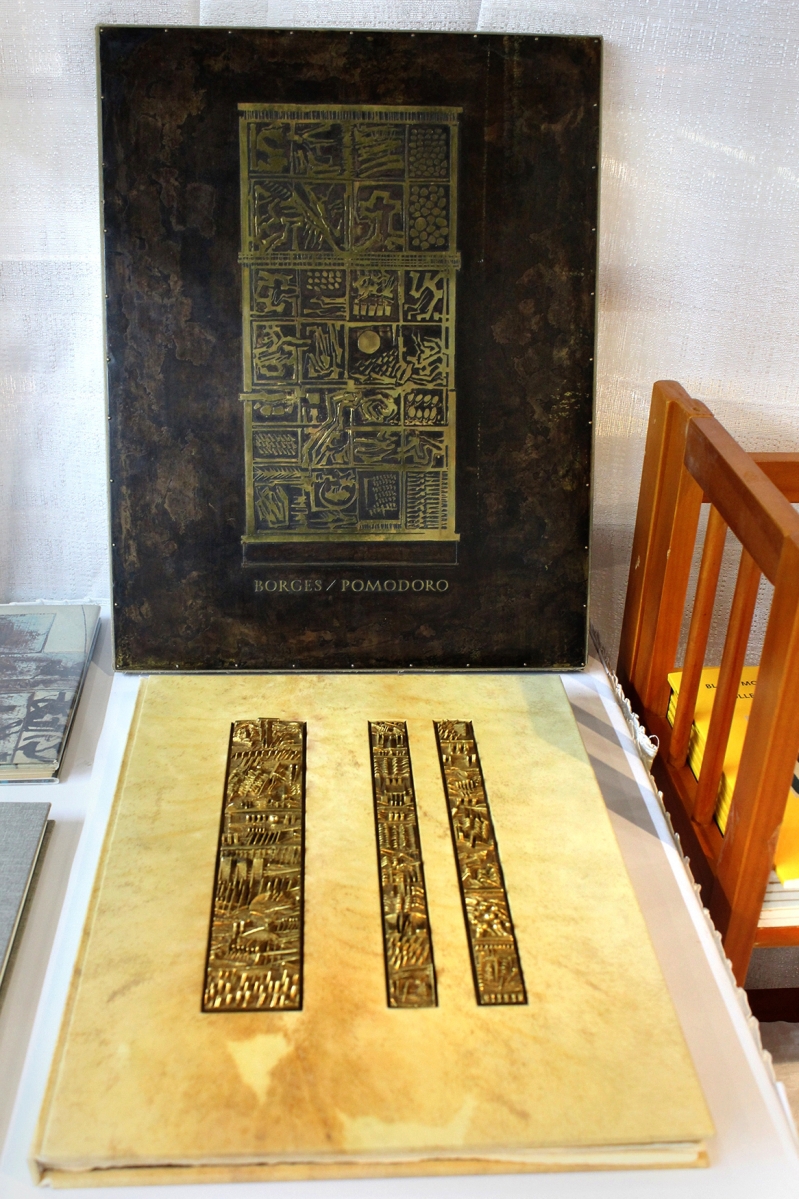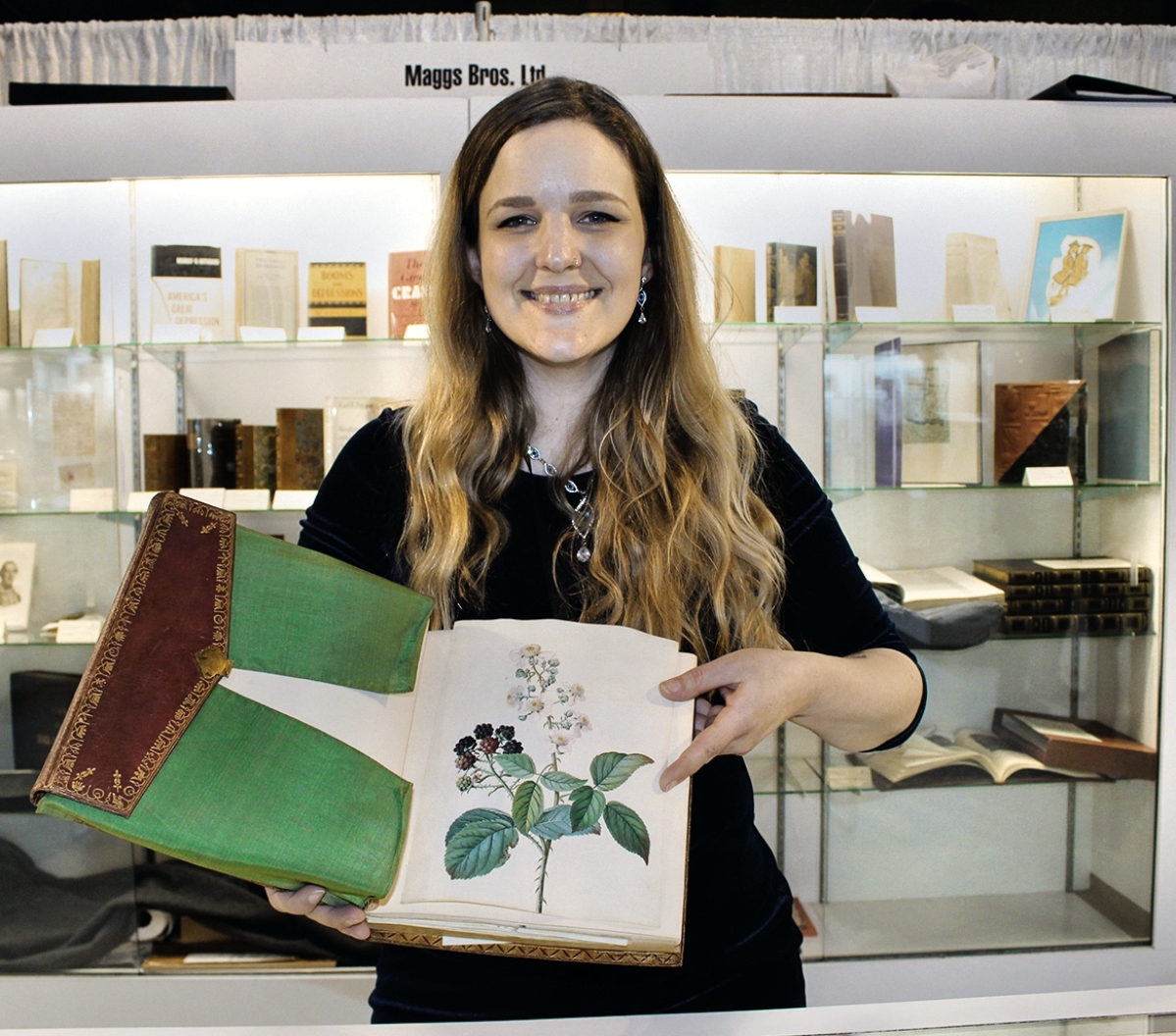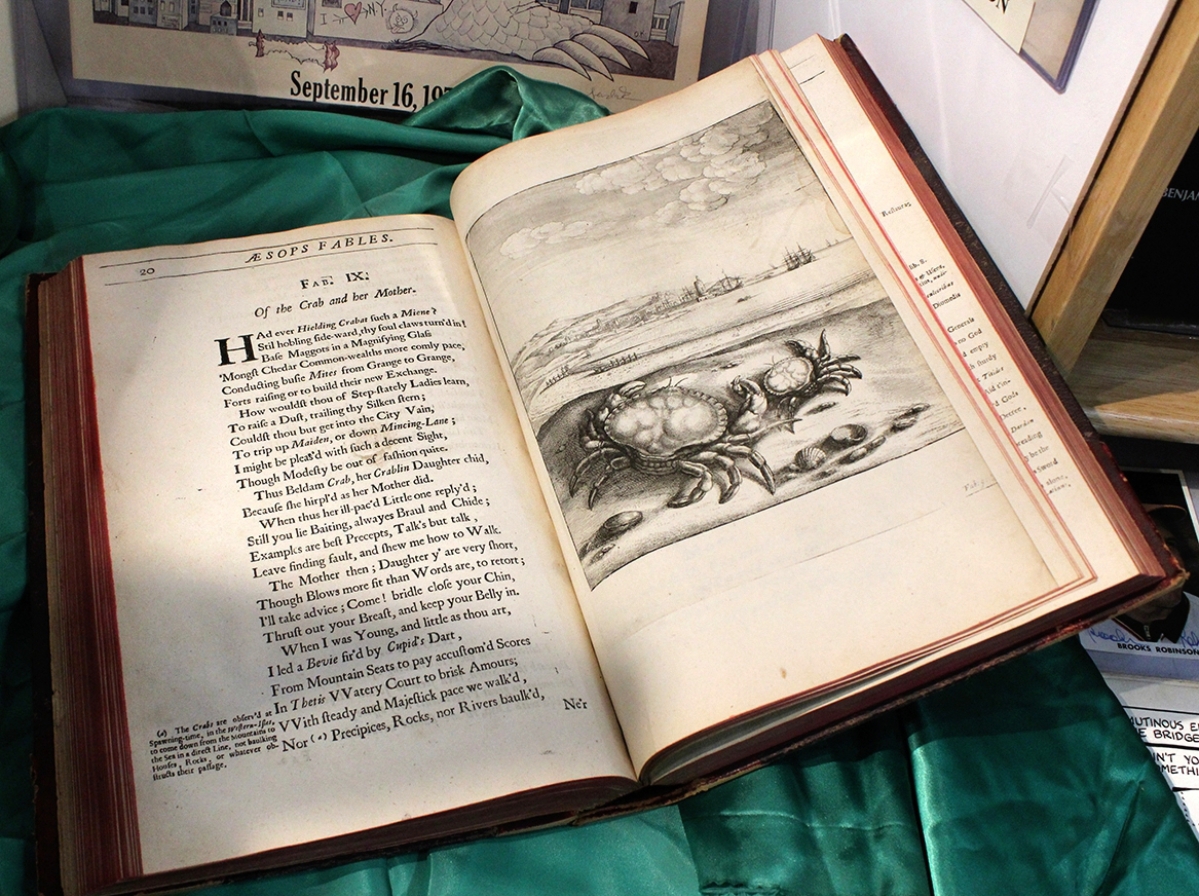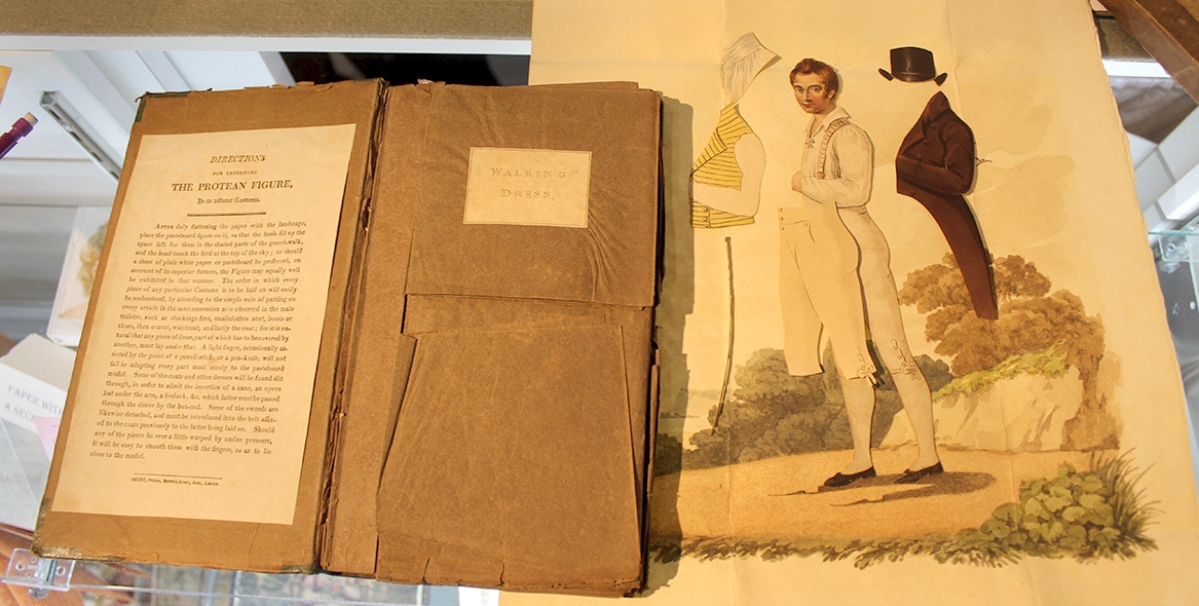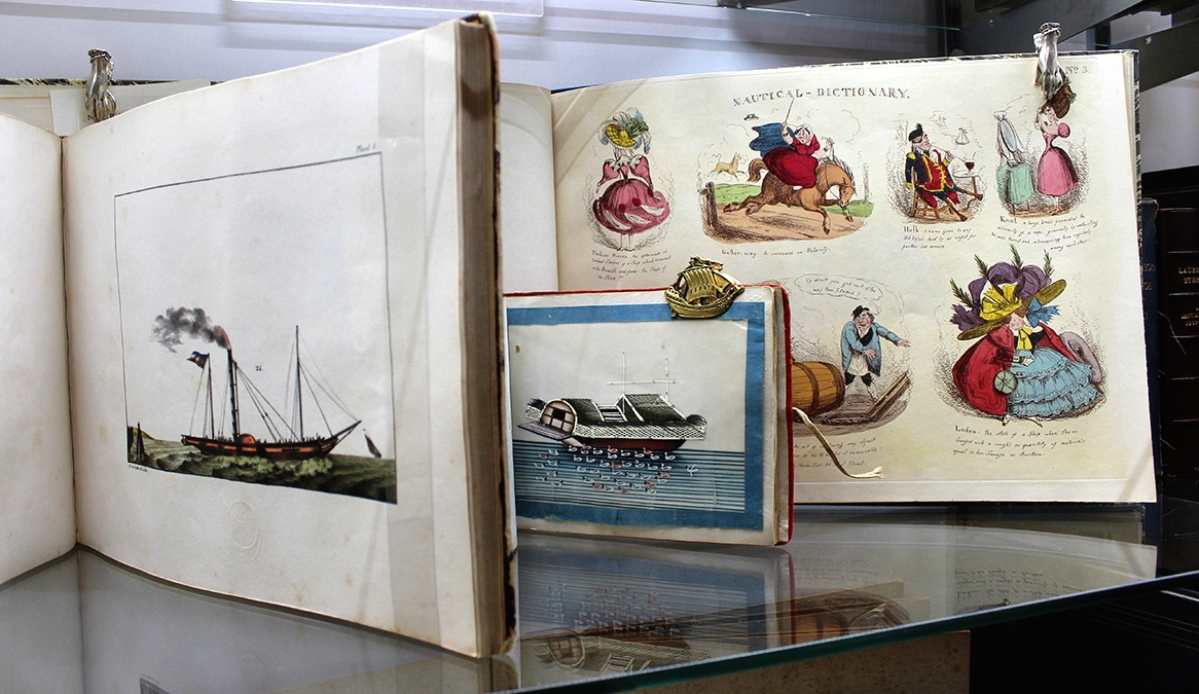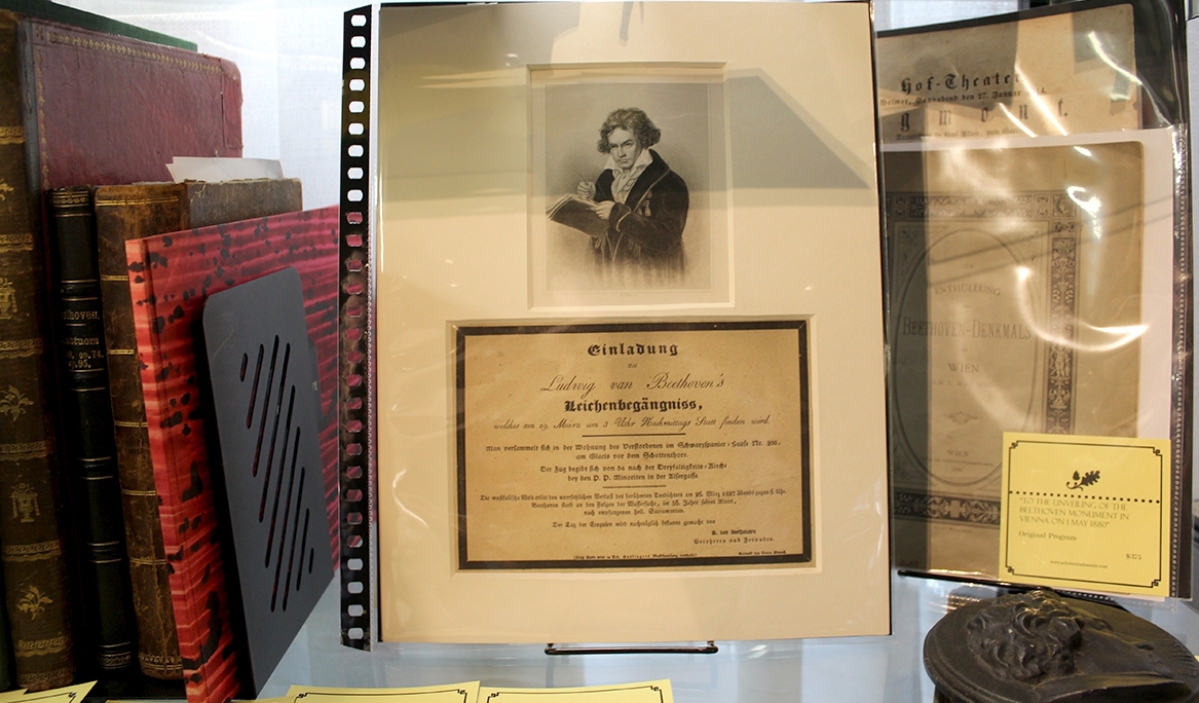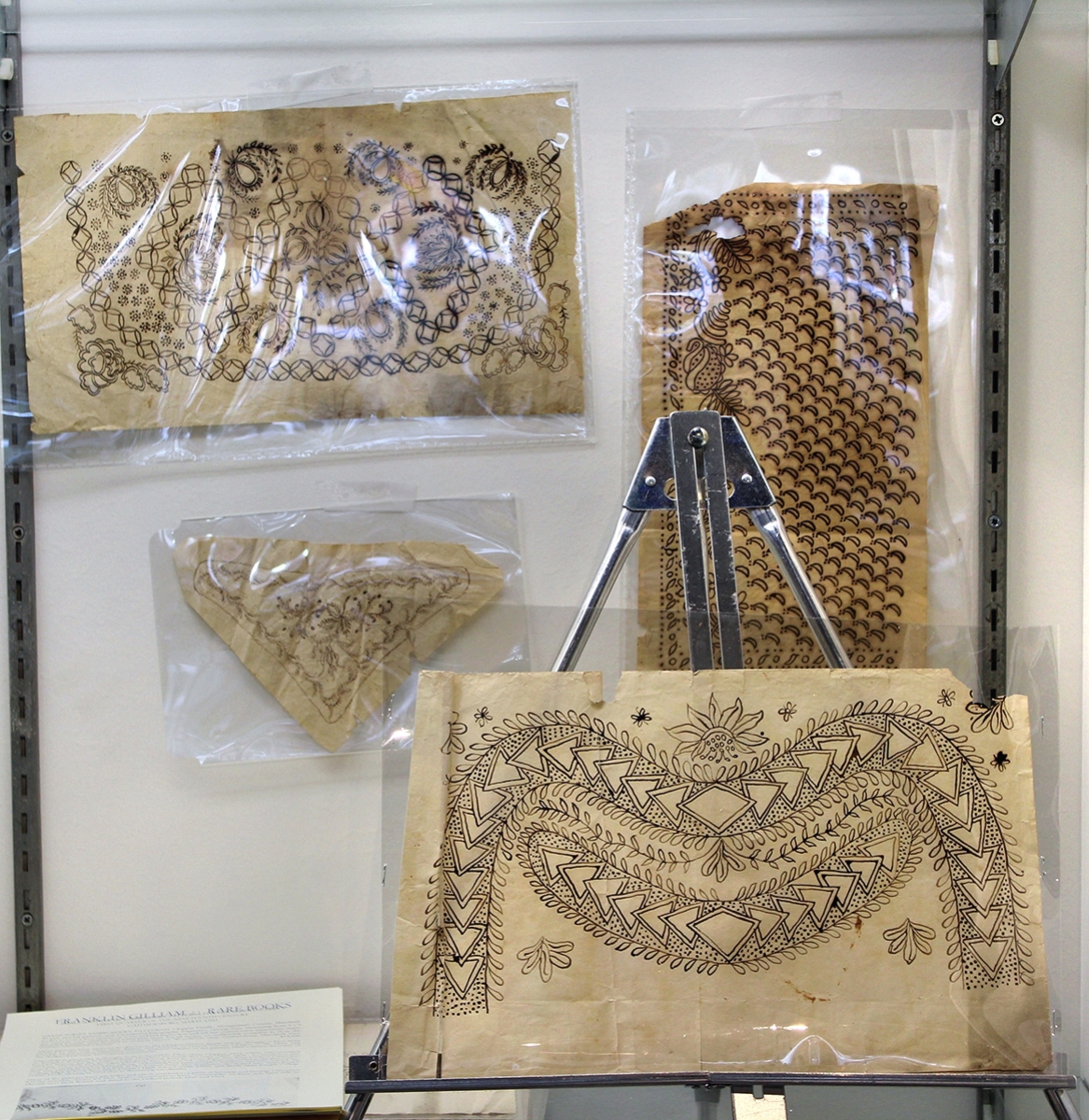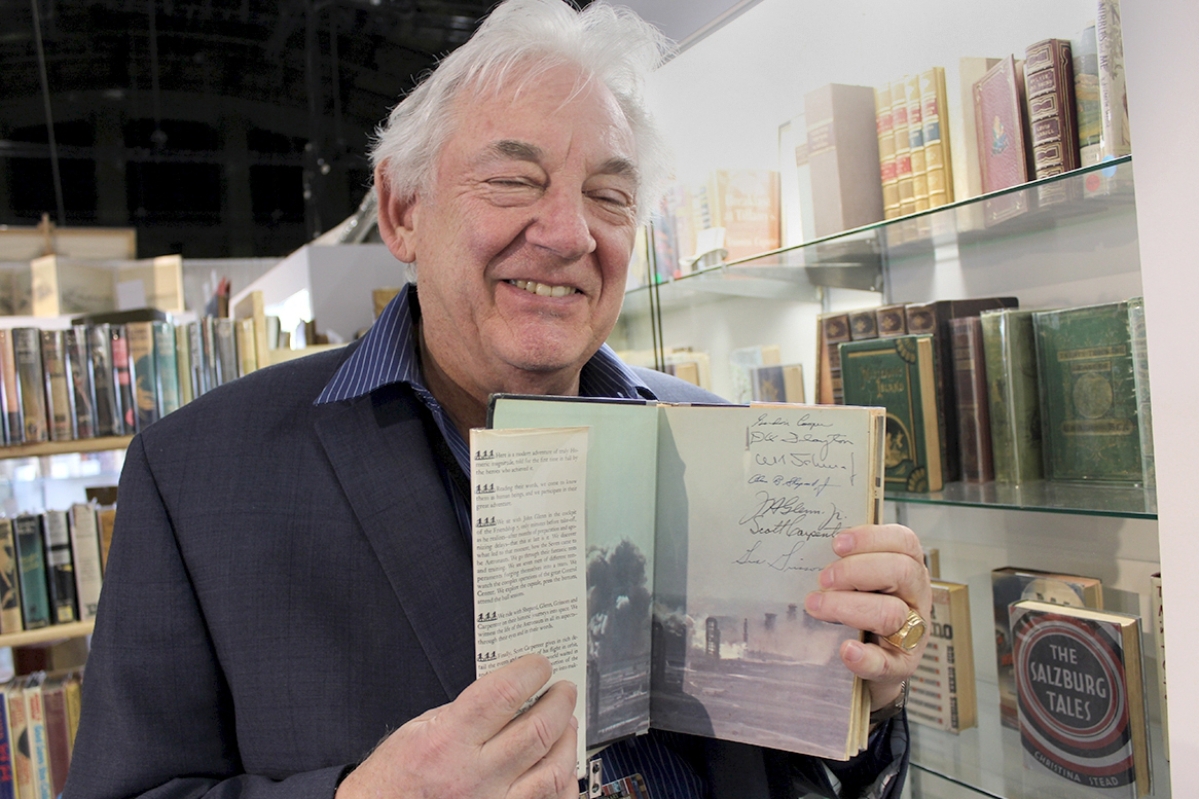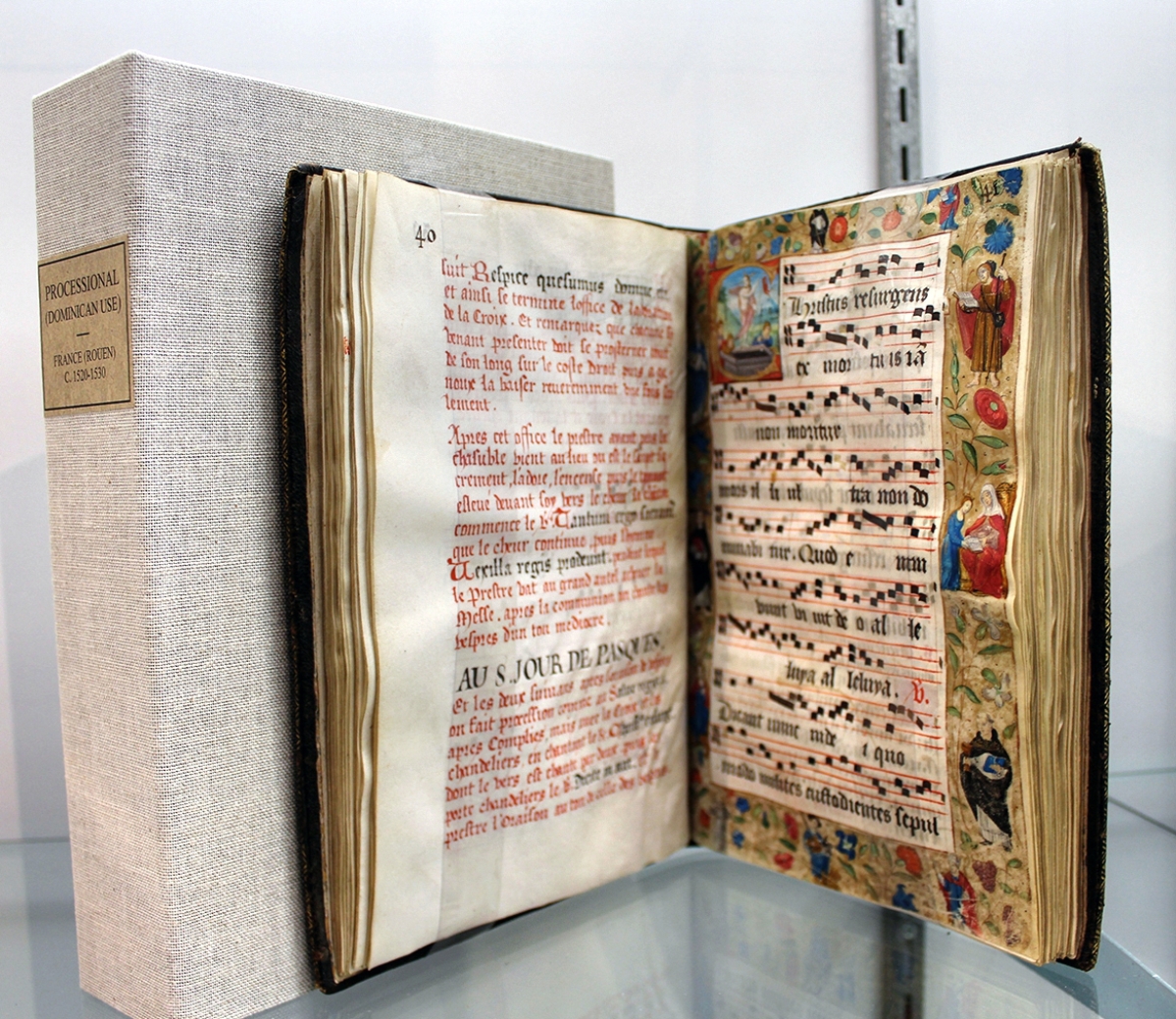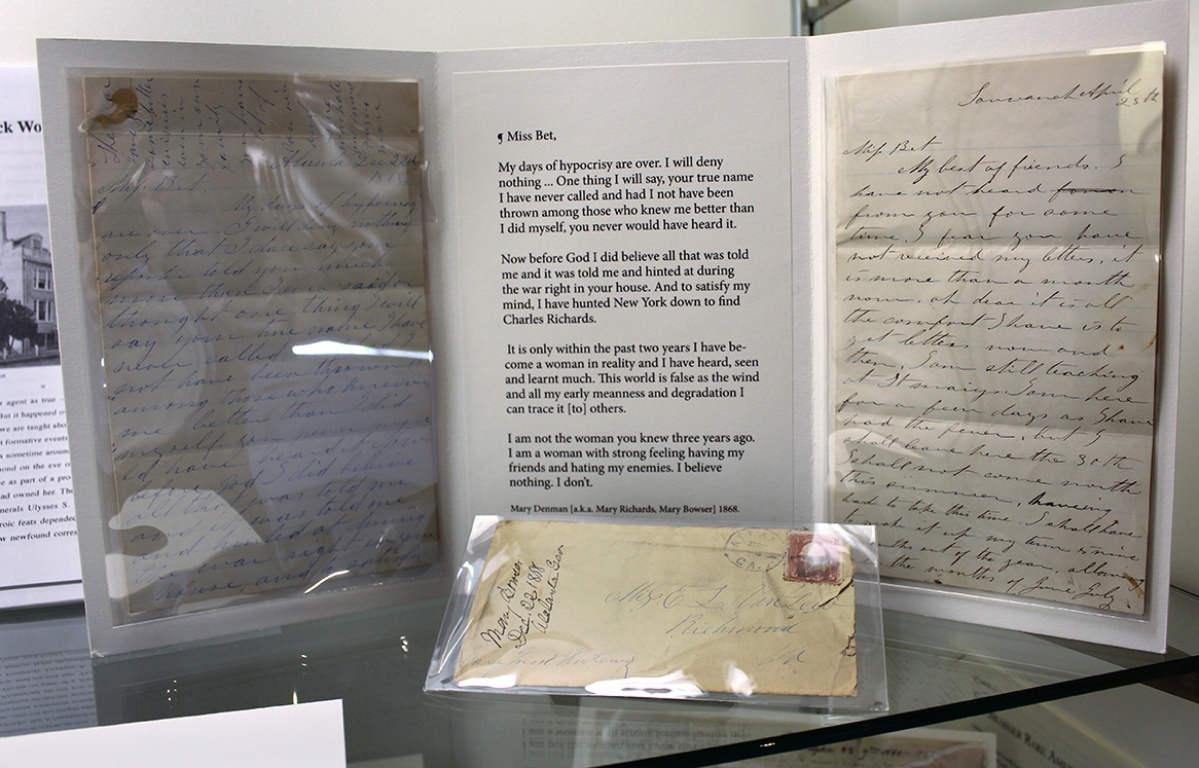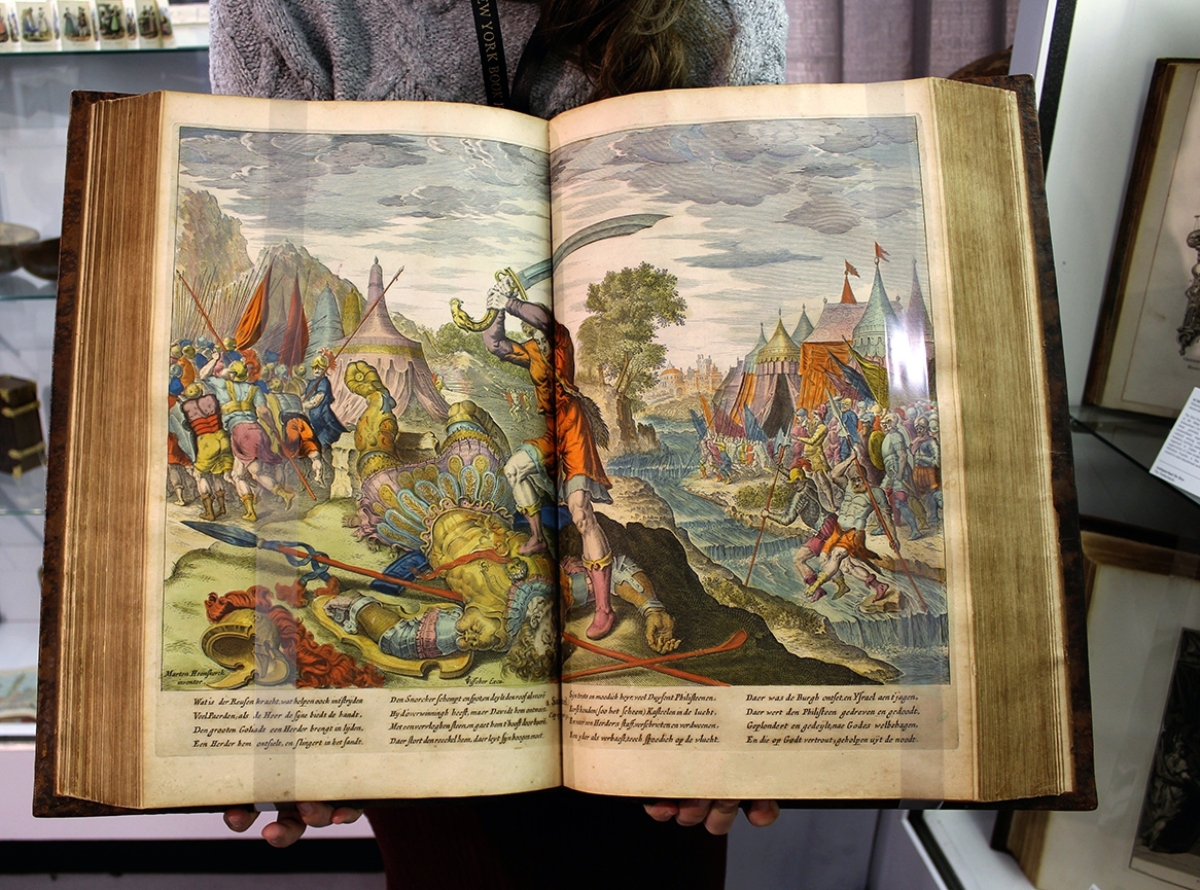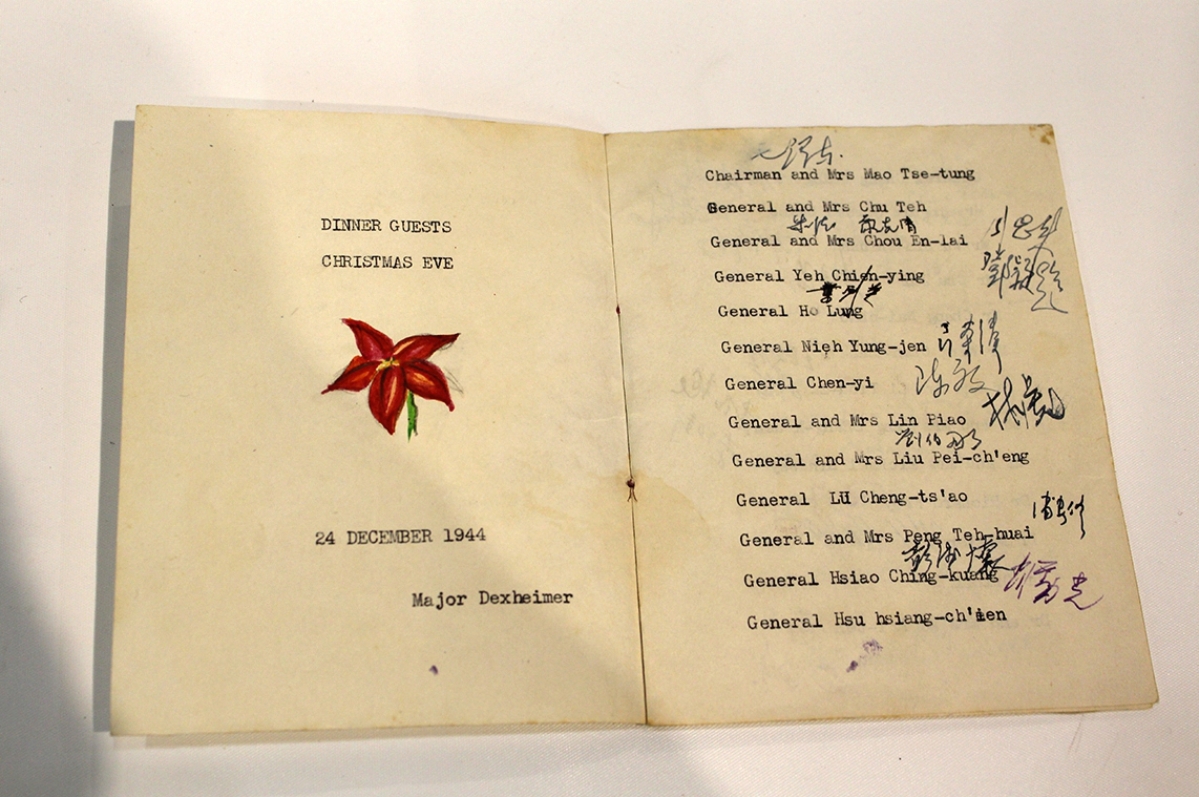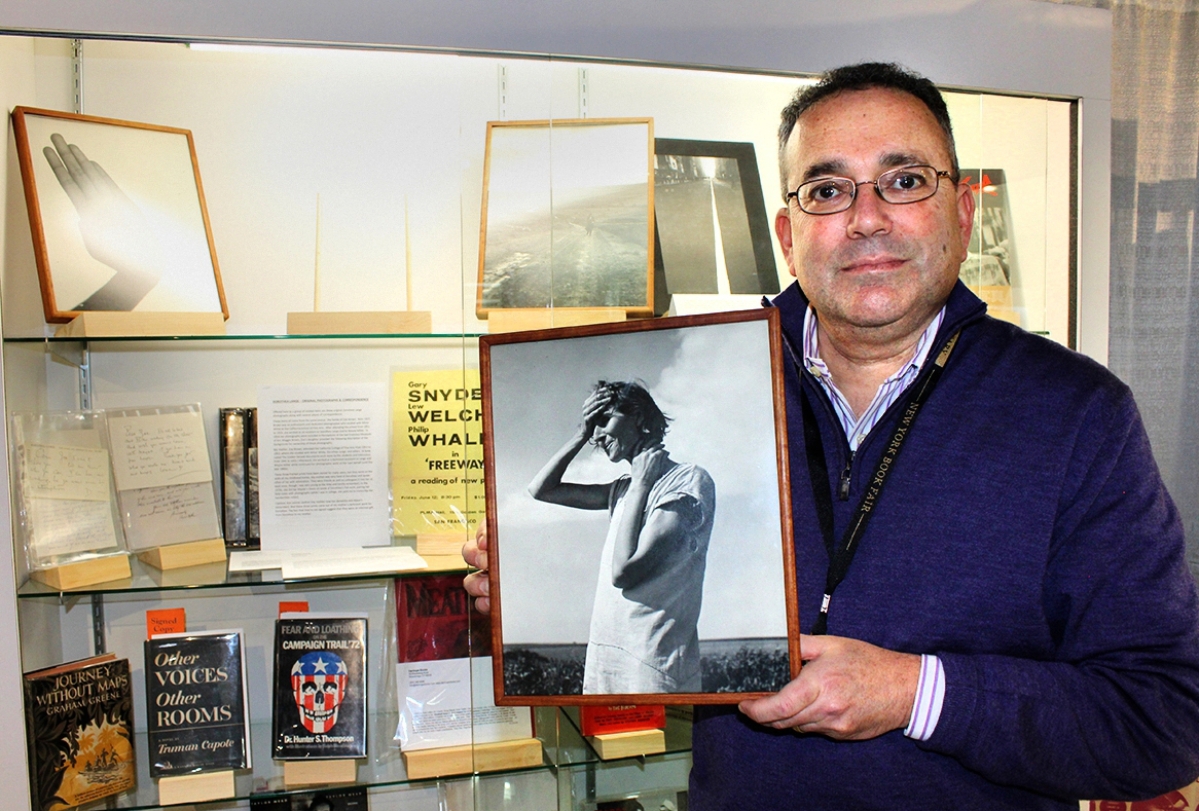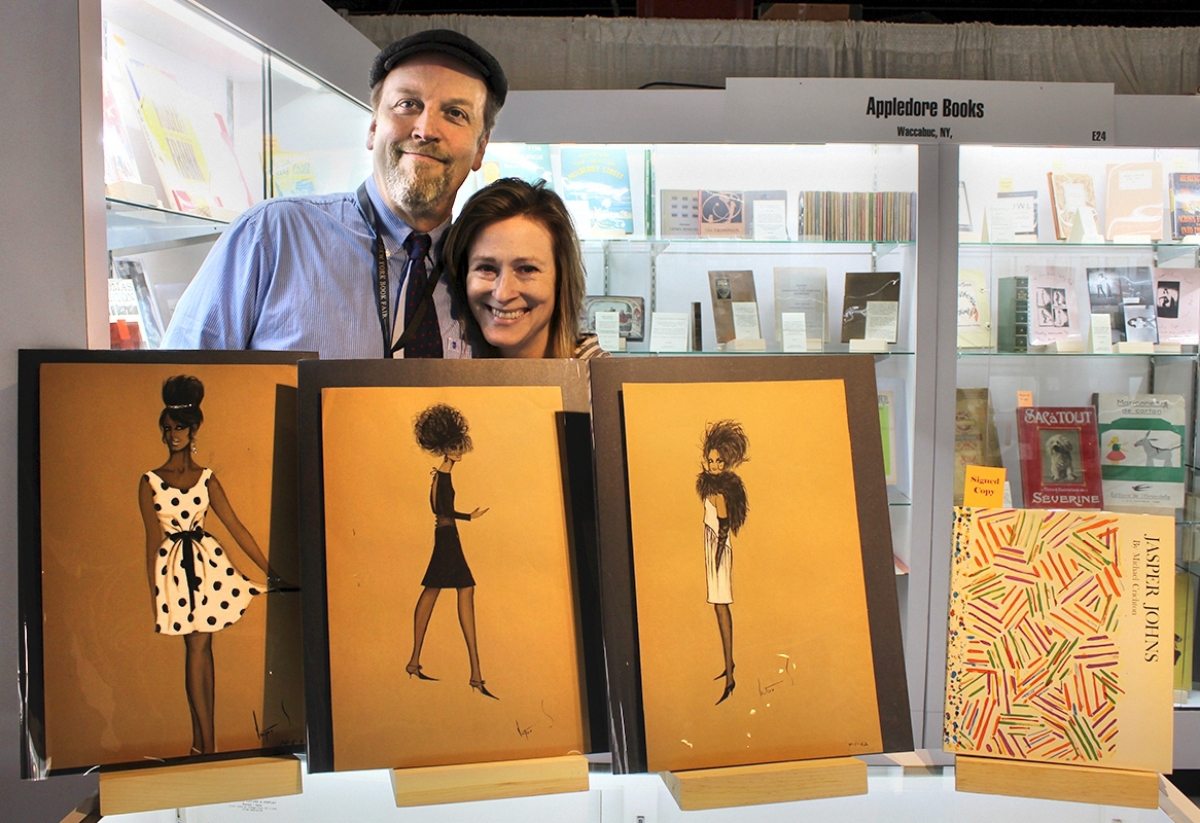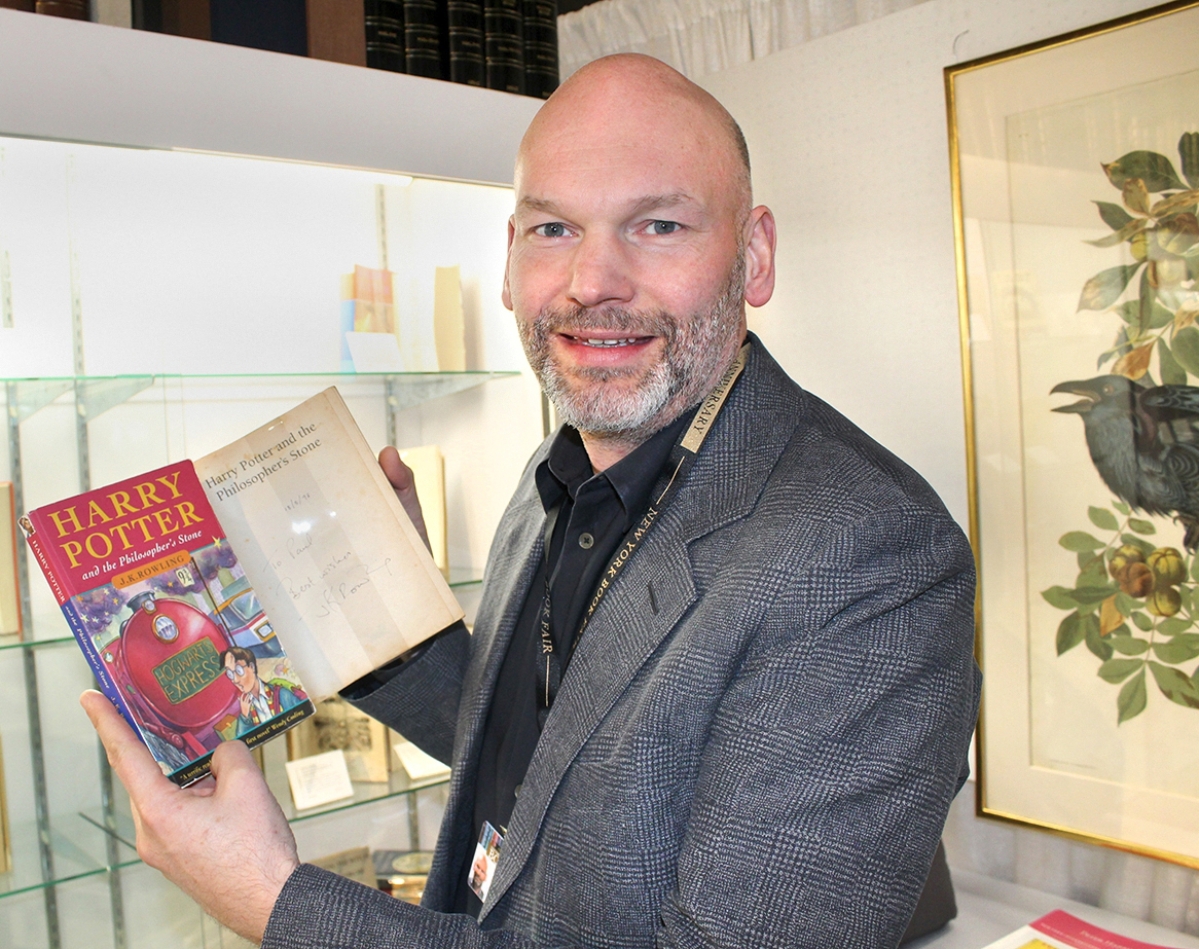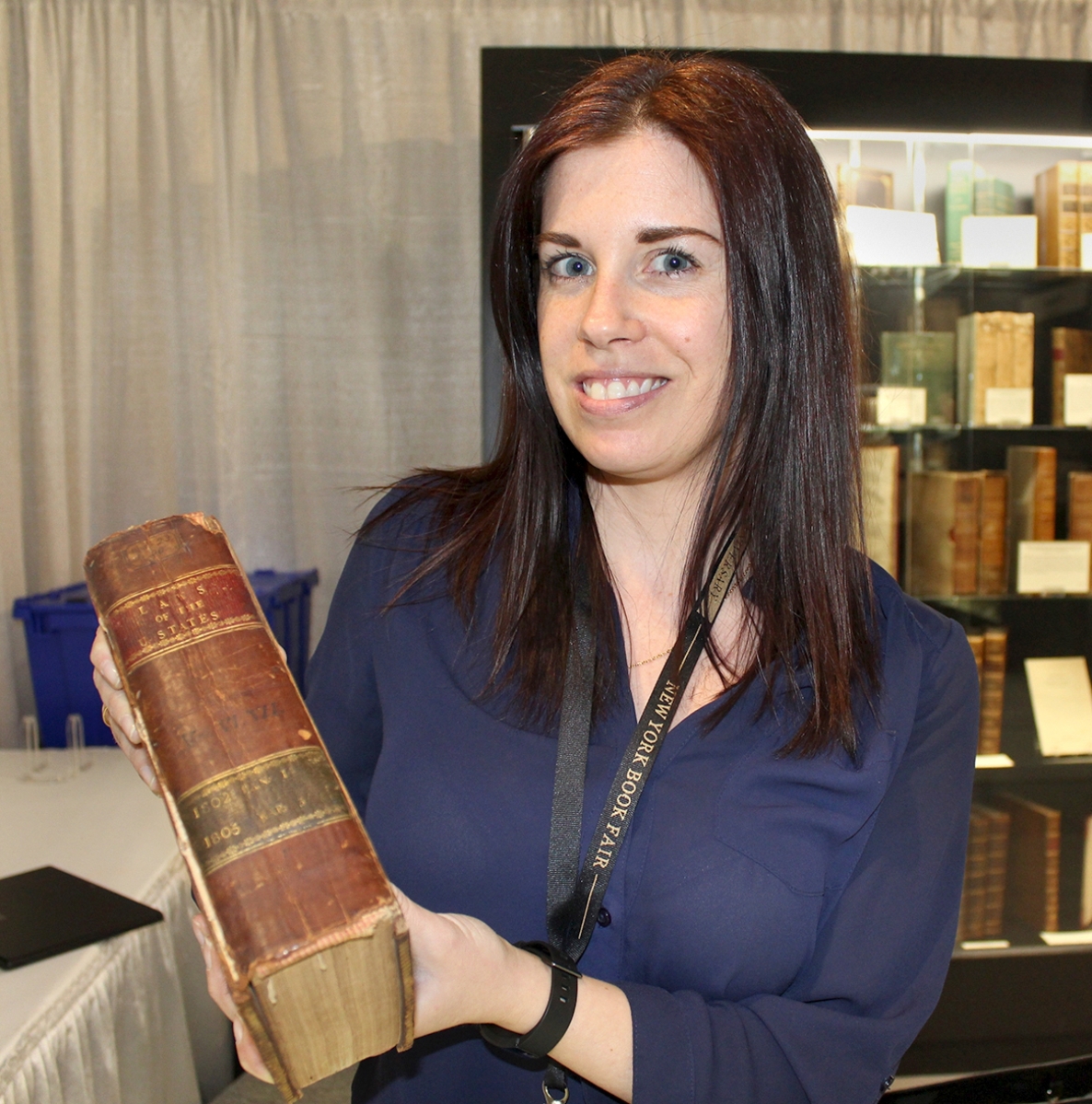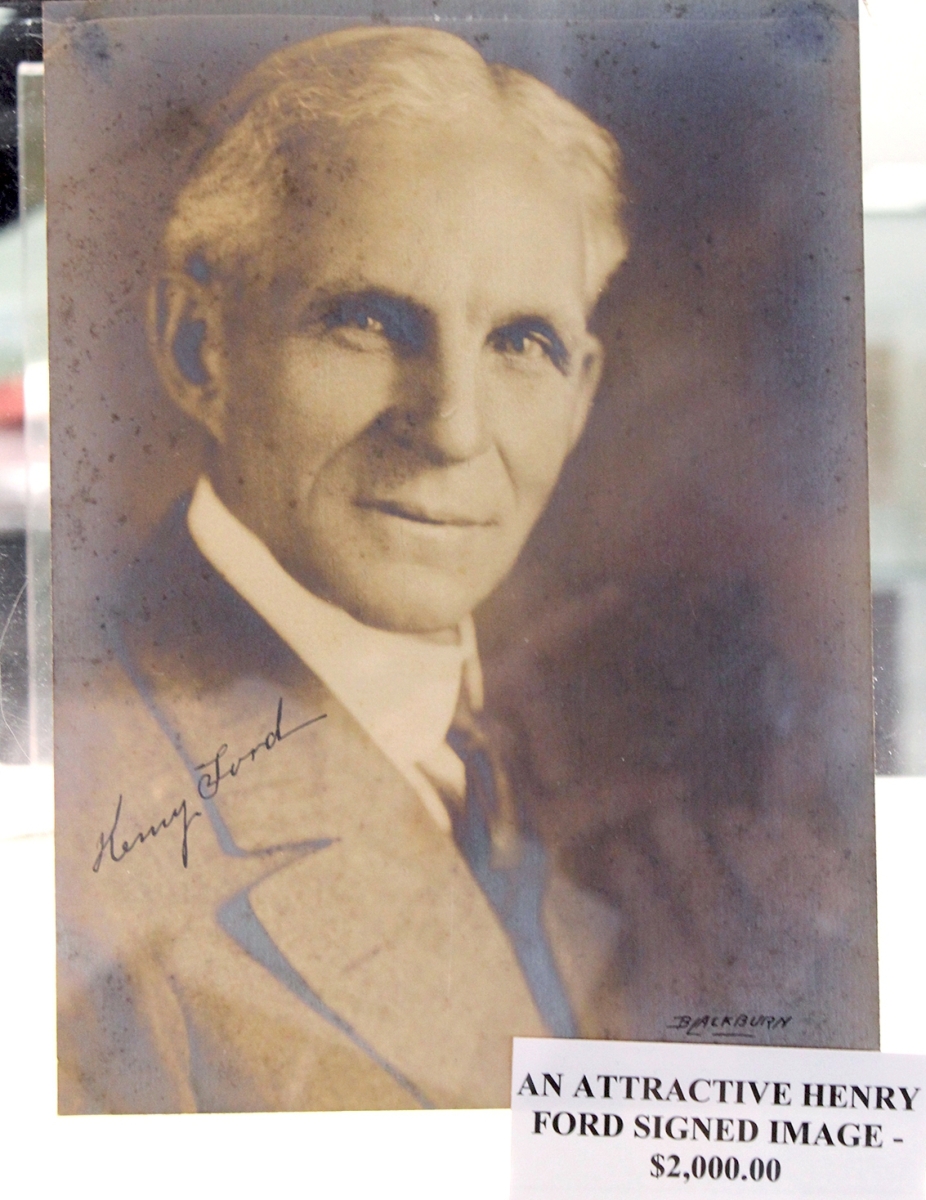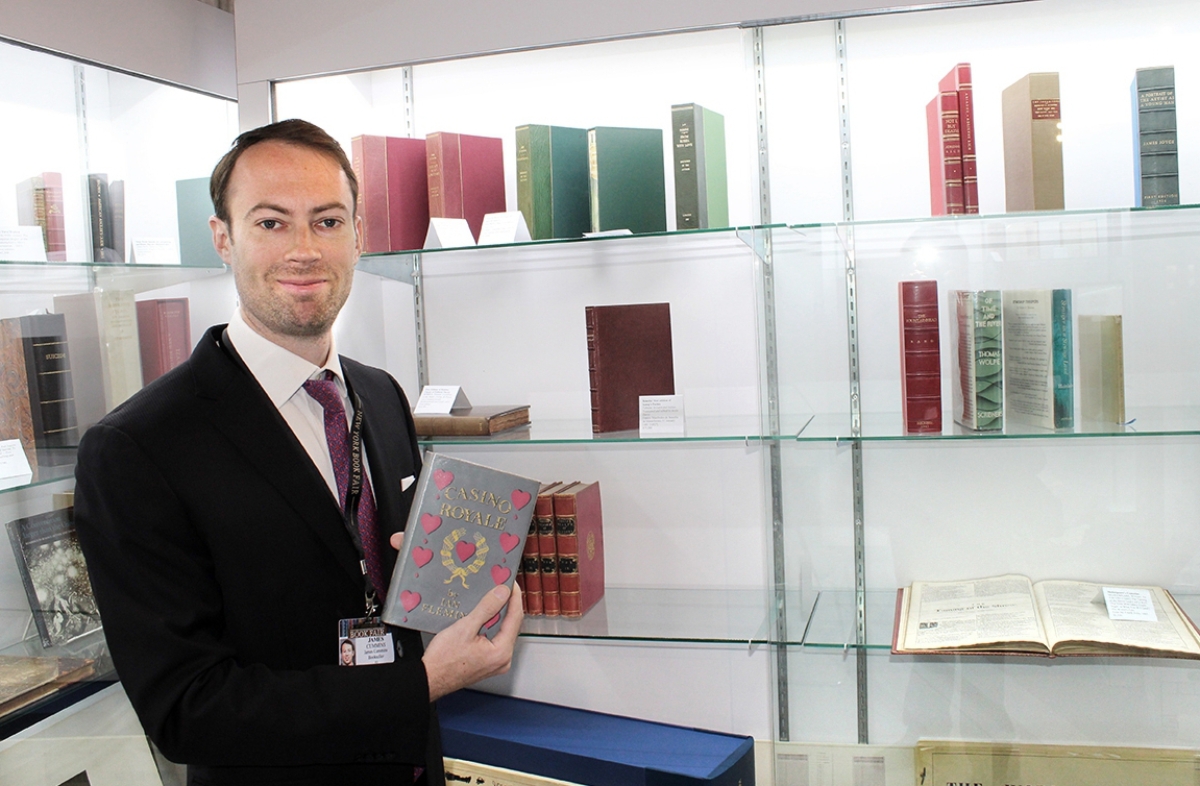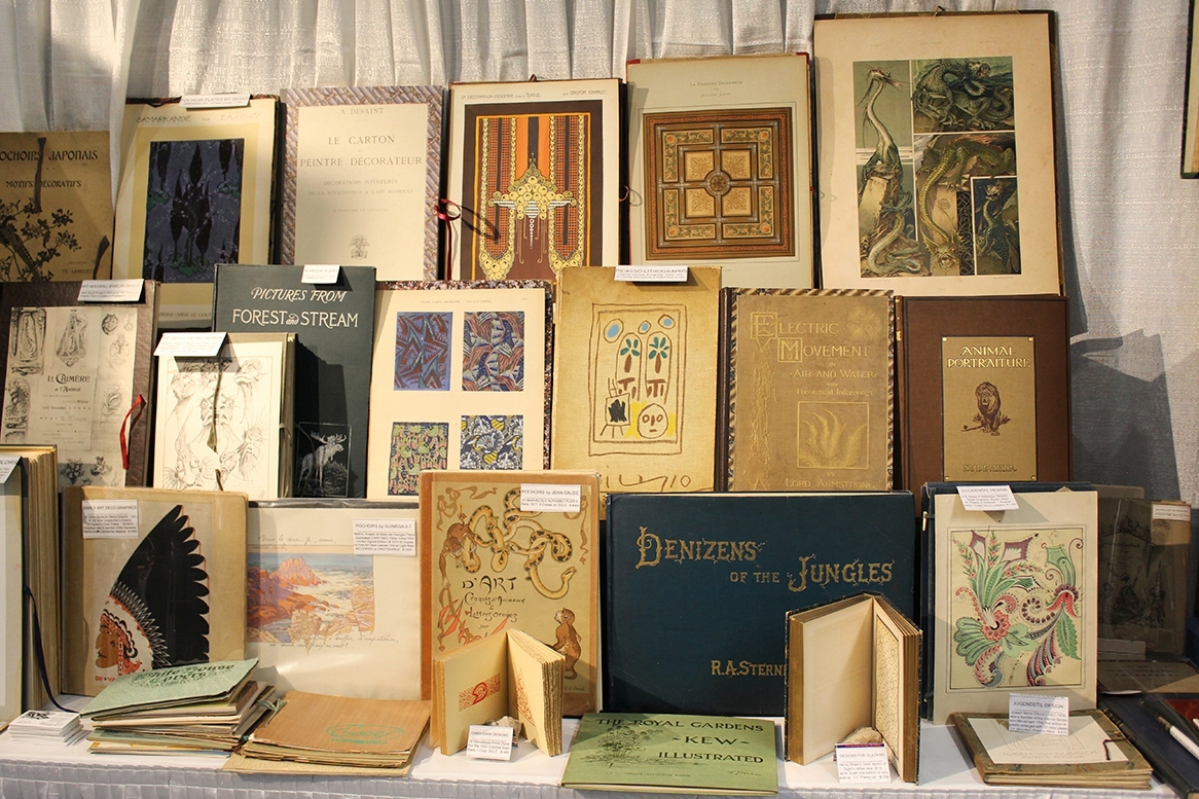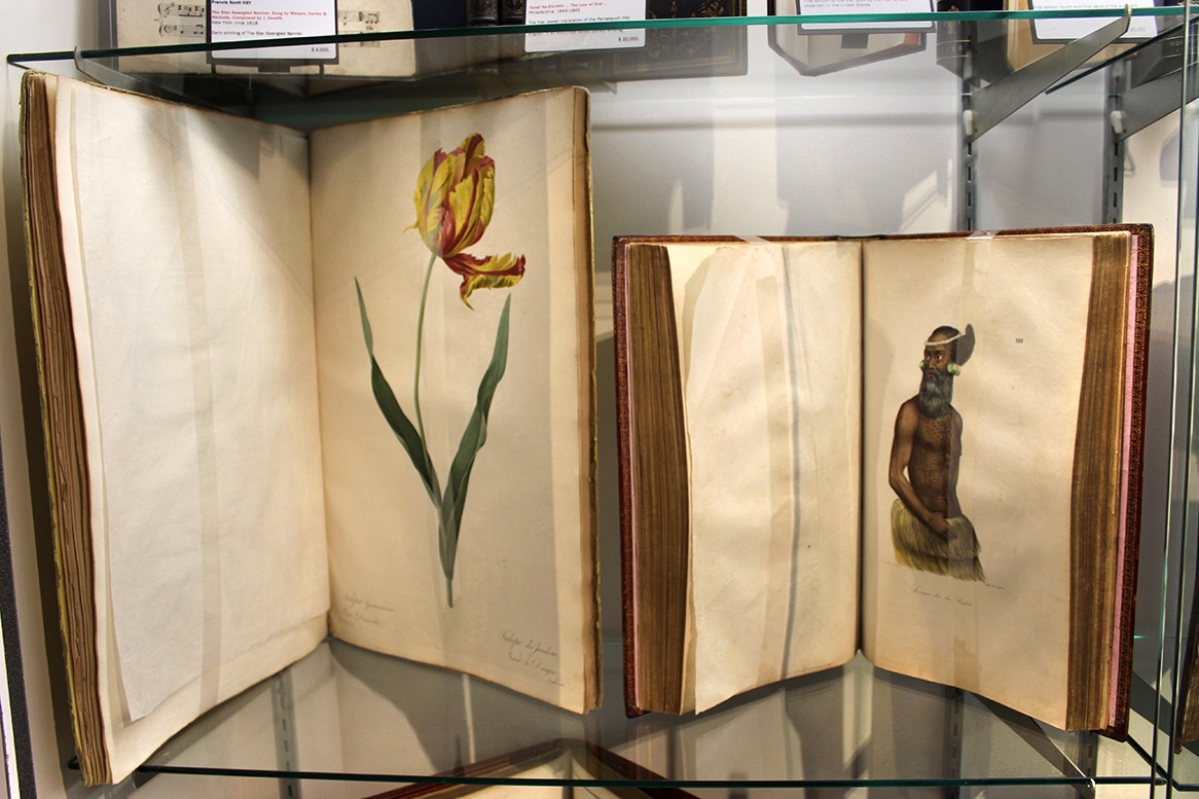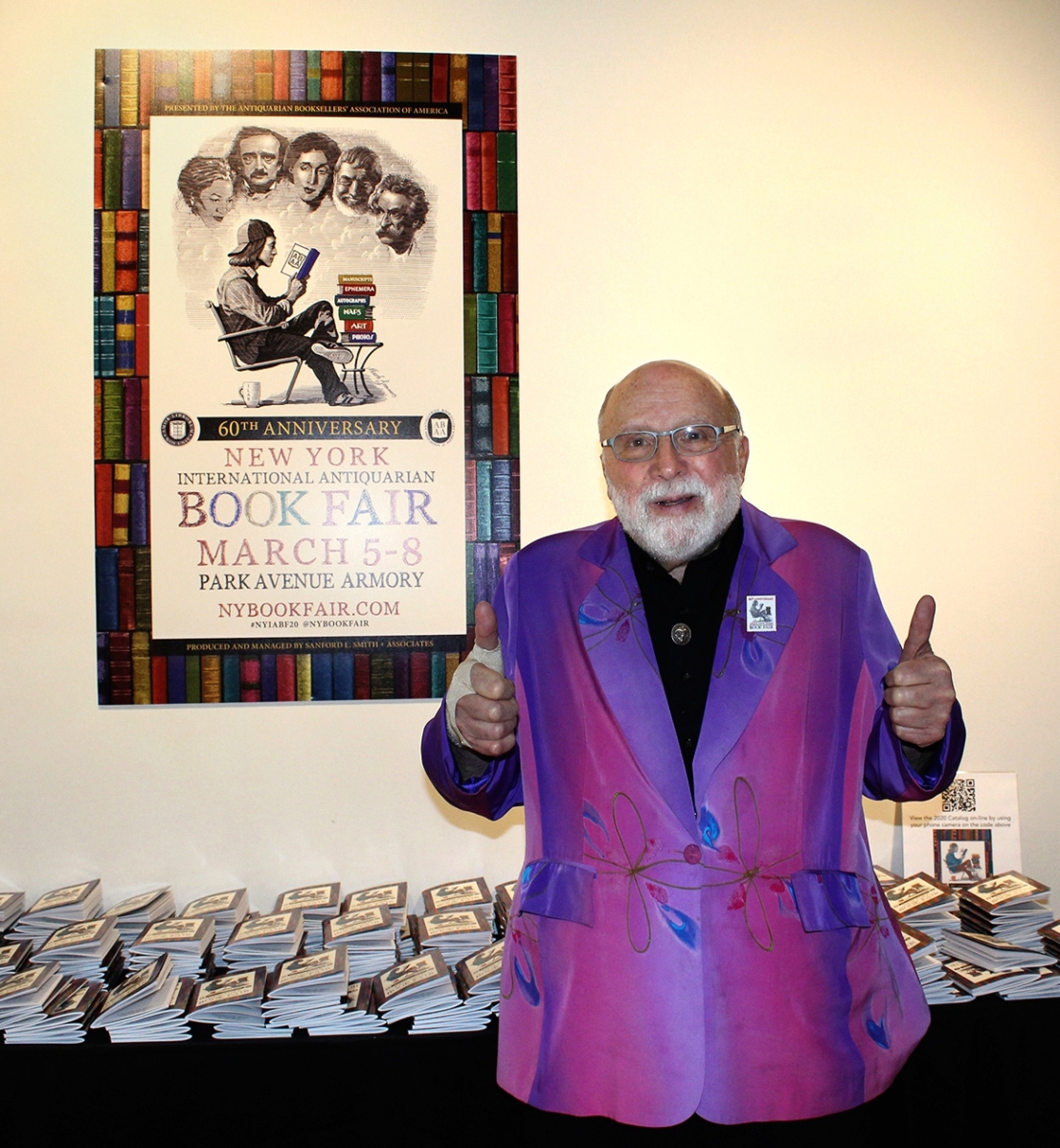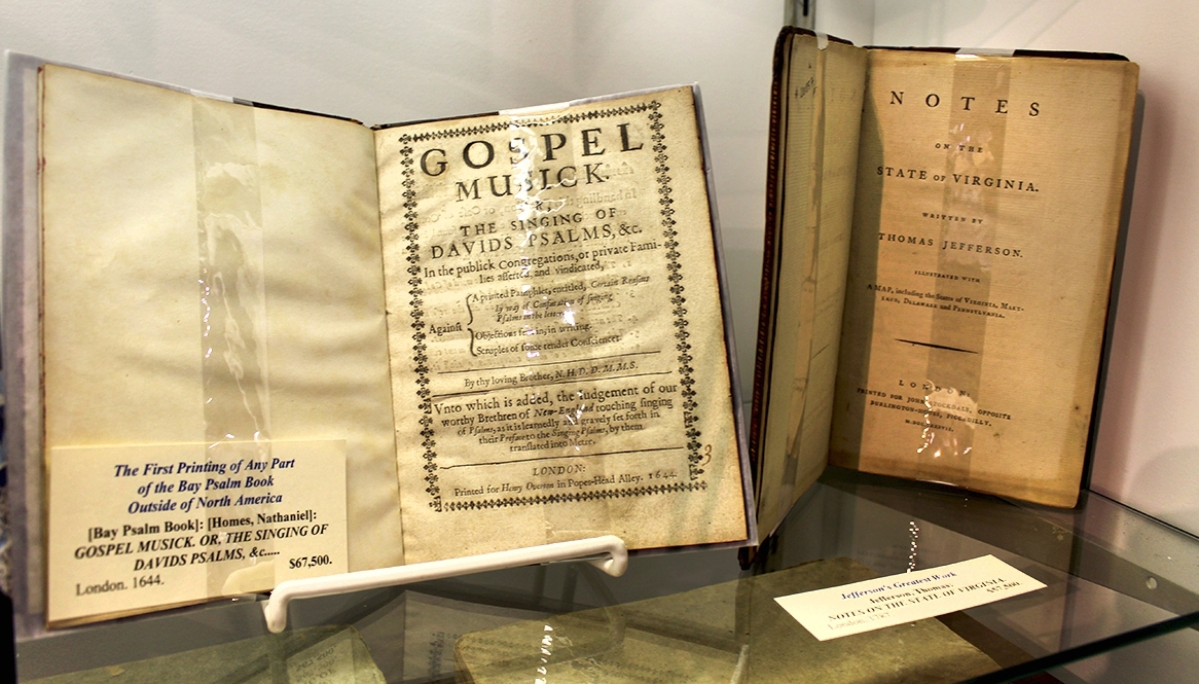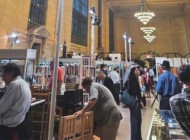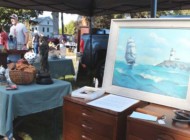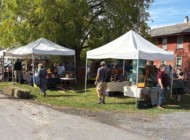Review and Photos by W.A. Demers
NEW YORK CITY – It is the direct antithesis of a duct-taped banana on a wall. Universally referred to as the world’s finest antiquarian book fair, the New York International Antiquarian Book Fair, which ran at the Park Avenue Armory, March 5-8, is the cerebral destination for bibliophiles, scholars, museum professionals and those collectors who seek out the rare or quirky. Here, spread out among more than 165 booths, 211 exhibitors from around the globe presented rare books, maps, illuminated manuscripts, incunabula, fine bindings, illustrations, historical documents, rare prints and print ephemera.
The show is always a much-anticipated event, and this year it marked a milestone, its 60th anniversary. There were some headwinds as New York City, the United States at large and the rest of the world grappled with the uncertainty caused by the rapidly spreading coronavirus pandemic. Standing like sentries on either side of the show entrance were two hand-sanitizer stations. Some greetings and hellos were accompanied by “elbow-bumps” and other curious gestures, and there was much mention of the virus since New York had just announced its first confirmed case of COVID-19 a few days ago before. But the fair was business as usual despite the uncertainty. David Brass, a rare bookseller from Calabasas, Calif., said, “The 2020 New York Book Fair was extremely well attended – certainly close to the same numbers as last year – even with the dark shadow of coronavirus. From a personal perspective, we bought well and sold well. Sandy Smith does a wonderful job of promoting and running what is most definitely now the premier book fair of the year.”
Brass’s sentiments were echoed by several other dealers contacted after the four-day show had wound down. The show’s chairman, Donald Heald, whose exhibit is itself filled with rare gems such as an 1824 album of botanicals by Pierre Joseph Redoute and a fundamental hand-colored work by Louis Choris on Alaska, California and Hawaii, was set up hard by the show’s entrance. He said, “The show went well and we were pleased, even though attendance was incrementally a bit down from last year.” Heald ticked off opening night visits by representatives from such institutions as Duke University, the New York Public Library, a committee from the Society of Cincinnati and Mount Vernon. “Sales were brisk,” he added, even for his own material, including a good Chinese military manuscript and a 1477 incunabula.
Buzz on the show floor this year was centered around a set of blueprints for the World Trade Center towers that had been rescued from a Denver, Colo., trash pile. They were being offered by James Cummins Bookseller, a Manhattan-based dealer of rare books and autographs, with a $250,000 price tag revealed by the dealer during the show’s Thursday evening preview. The subject of a Wall Street Journal article, the find got good press and sold during the show, according to show producer and manager Sandy Smith.
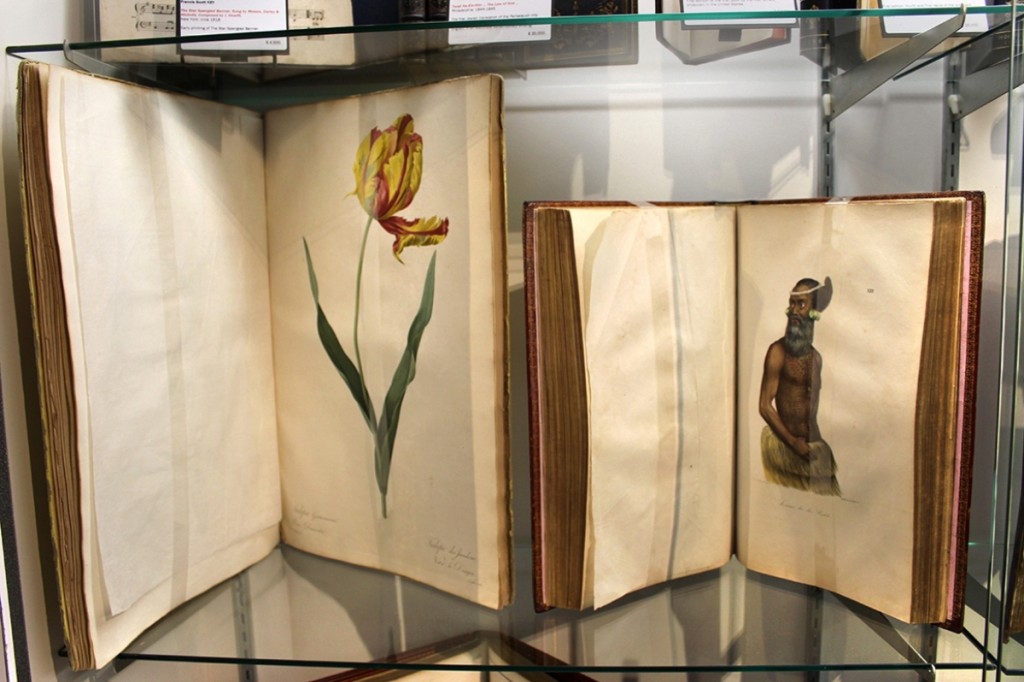
Two rare tomes on offer at Donald Heald Rare Books, New York City — left, the 1824 album of botanicals by Pierre Joseph Redoute and a fundamental hand-colored work by Louis Choris on Alaska, California and Hawaii, characterized as “one of the most beautiful books of travel in existence.”
“It was amazing,” said Smith regarding the show’s success, “I expected that we’d get half the attendance of last year, but we were down only about 1 percent, with a steady flow of people both Saturday and Sunday. They were a little reluctant to spend money, though, due to the stock market.” This observation was borne out by Owen Kubik of Kubik Fine Books, Dayton, Ohio, who related, “One collector told me he had lost a million dollars in the market that week and wasn’t in much of a mood to spend. This seemed fairly common – people were interested and engaged but reluctant to pull the trigger.
“Our Books for Budding Collectors section of books under $400 did quite well.”
Attending the fair with remarkable examples ranging from Shakespeare to Homer and Harry Potter was London’s Peter Harrington, one of the word’s largest rare booksellers. Along with the Bard’s Third Folio – Comedies, Histories, and Tragedies (1663), the firm’s Pom Harrington was offering the first printed edition of the works of Homer (1488/89) including the Illiad and the Odyssey, as well as the first paperback edition of the first Harry Potter book (1997), which appeared at the same time as the hardback edition. The third folio edition of Shakespeare’s plays is generally regarded as the rarest of the Seventeenth Century folio editions. An unknown number of copies are thought to have been destroyed in the Great Fire of London of 1666.
New York City dealer Enluminures brought a selection of manuscripts that showcase its varied inventory, including a rare Eleventh Century manuscript, medieval Bibles and, especially for this show, books made and used by women. One such example was a customized processional for Dominican nuns by the Master of Girard Acarie in Latin and French. The illuminated manuscript on parchment bound into 69 folios had a range of dates from 1520 to 1674 because, the dealer explained, it was a work in progress. Additional highlights were five silk prayer books that had been woven in the late Nineteenth Century on Jacquard looms and were modeled on medieval manuscripts.
“We were pleased that the threat of the coronavirus didn’t deter most visitors to the fair and except for perhaps a slightly less busy opening night preview, we would say attendance was as usual,” said Justin G. Schiller of Battledore, Kingston, N.Y. “The two items we showed that attracted constant attention was the Christmas Eve 1944 menu for dinner with the American troops in northern China hosting the Red Army, including the handwritten signatures of Chairman Mao Zedong, Zhu De, Zhou Enlai, Lin Piao and others. There were four additional letters by Mao and other senior officers to the American commandant thanking them for their hospitality and introducing Christmas to their cultural experience. The second item was a huge German sample book of machine-manufactured lace, more than 2,000 examples, dating about 1910-15, absolutely complete with inventory numbers and nothing cut out.”
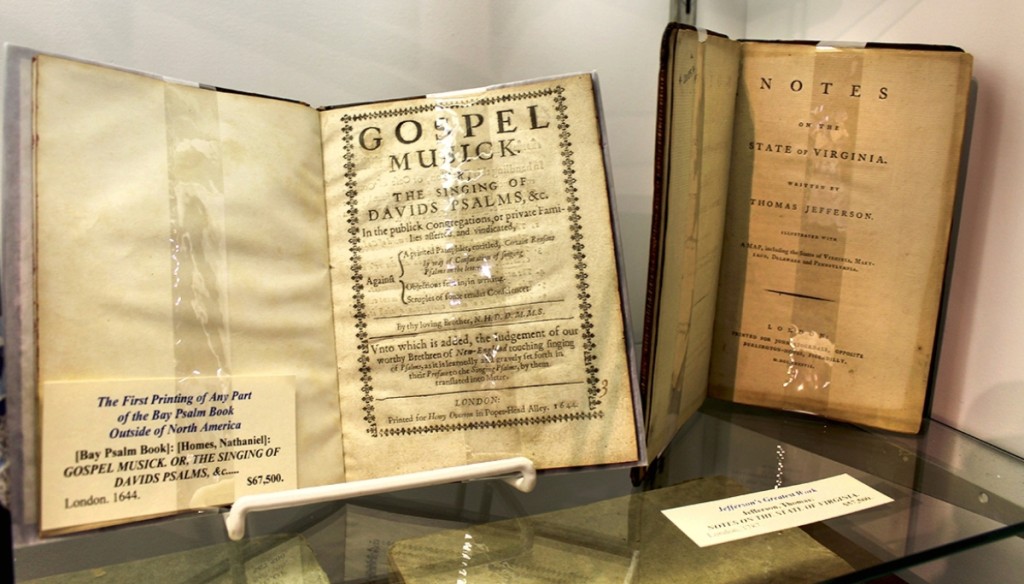
At William Reese Company, New Haven, Conn., Bay Psalm Book, London, 1644, the first printing of any part of it outside North America.
Alan Zipkin of Derringer Books, Woodbridge, Conn., who focuses on art, poetry and photography, said, “The show was very well attended, and pretty much every one of my colleagues expressed having favorable experiences at the show. A nice mix of institutional librarians, fellow dealers and, of course, the public showed up in great numbers this week for which we are all grateful.”
Zipkin brought a trove of original photographs and correspondence from the family of Zoe Brown. Born in 1927, Brown was an enthusiastic and dedicated photographer who worked as an assistant to famed American photographer Dorothea Lange. There were three prints on offer by Zipkin that had come out of Brown’s darkroom, and Brown’s daughter Maggie said that the fact that they were not signed suggests they were an informal gift from Lange to her mother. Likely printed in the 1950s, “Woman of the High Plains, Texas Panhandle,” one of the photographer’s most expressive photos, made originally for the Farm Security Administration, was a sale for the dealer.
Selling across the board from high-end to mid-level works was Jeff Bergman, a Fort Lee, N.J., bookseller who said he’s done this show for at least 13 or 14 years. “Best in the world, and New York City is the best venue in the world,” he said. One of his notable books was a copy of We Seven, the heroic story of the pioneer Mercury astronauts who risked their lives for America’s first manned space voyages. It was inscribed by all seven members of that storied team. He sold a copy of John Steinbeck’s East of Eden, a signed copy of An American Life, the 1990 autobiography of former US President Ronald Reagan, as well as children’s books like How the Grinch Stole Christmas and Cricket in Times Square.
A notable tome being offered by Bauman Rare Books, New York City, was Thomas Jefferson’s personal copy of Vols VI and VII of the Laws of the United States, 1803, 1805. With Jefferson’s characteristic ownership marks, annotations and marginalia, it provided some insight into the acts of the Seventh and Eight Congresses as well as the Louisiana Purchase Treaty.
While rare books and photographs dominated, not everything showcased was bound in calfskin or framed. Federal period embroidery patterns descended in a Maryland family were highlights in the booth Franklin::Gilliam Rare Books of Charlottesville, Va. These were used for household fabrics, according to Mary Cooper Gilliam. Descended in the Clopper family, the archive comprised 59 pen-and-ink patterns and two numbered lithographic fragments of various sizes. Although creased, some stained and some bearing tears, all the images are sufficiently complete to show the intended pattern. Anyone who is familiar with Betty Ring’s Girlhood Embroidery will recall that the institution attended by Ellen Maria Clopper (1811-1868), St Joseph’s Academy in Emmitsburg, Md, became famous for the quality of the needlework done by its students.
There was additional good news following the conclusion of the fair. Smith signed a six-year contract with the show’s official sponsor, the Antiquarian Booksellers’ Association of America, so will return for its 61st edition in 2021. For information, www.nybookfair.com or 212-777-5218.

